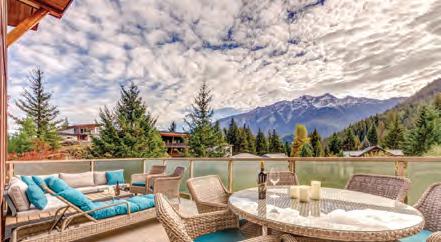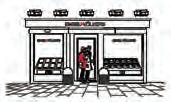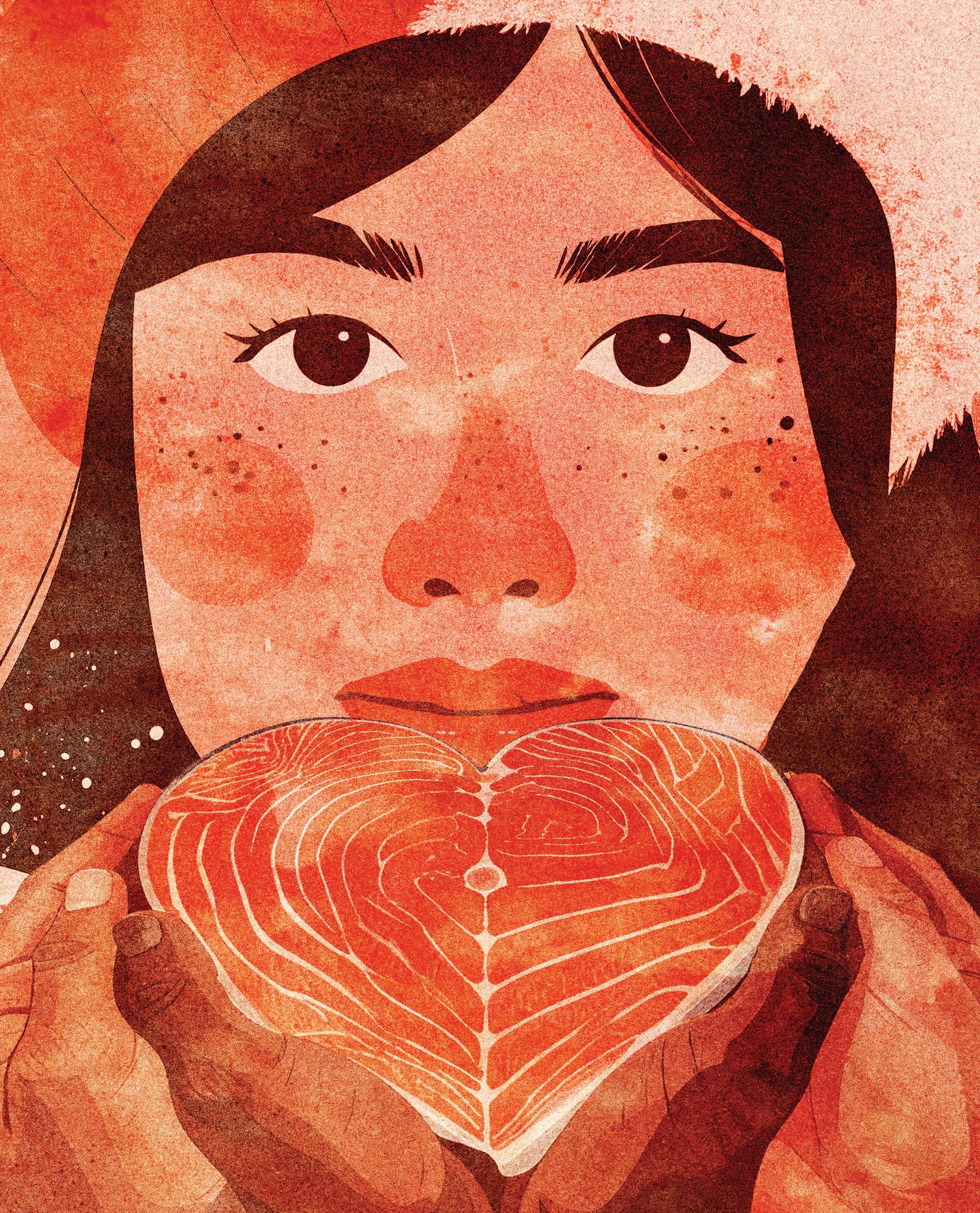






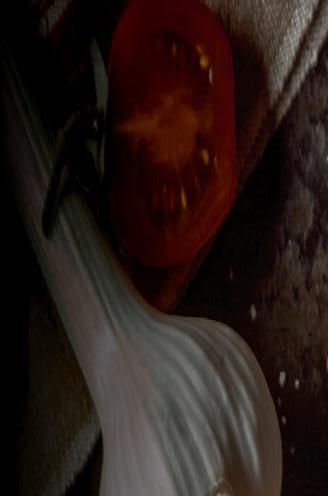
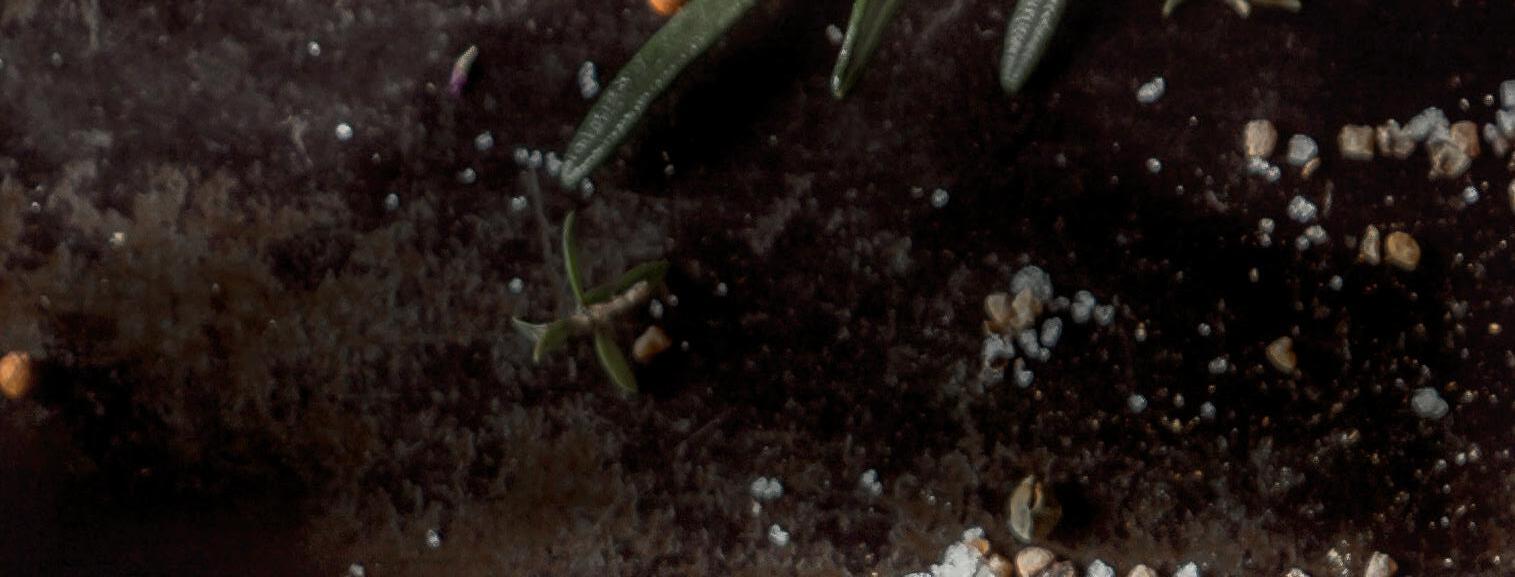



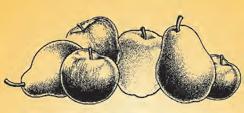




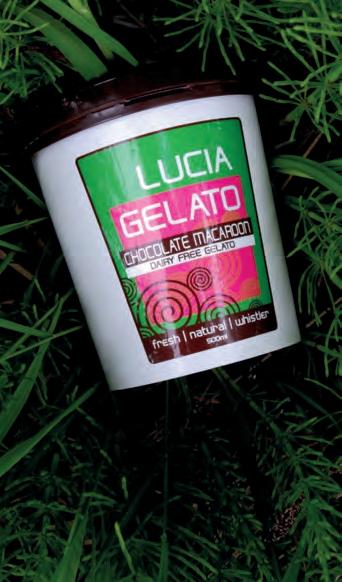
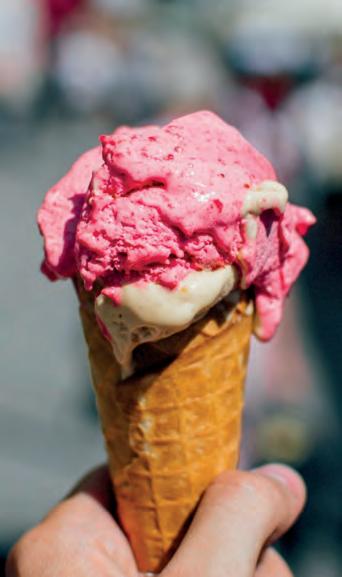
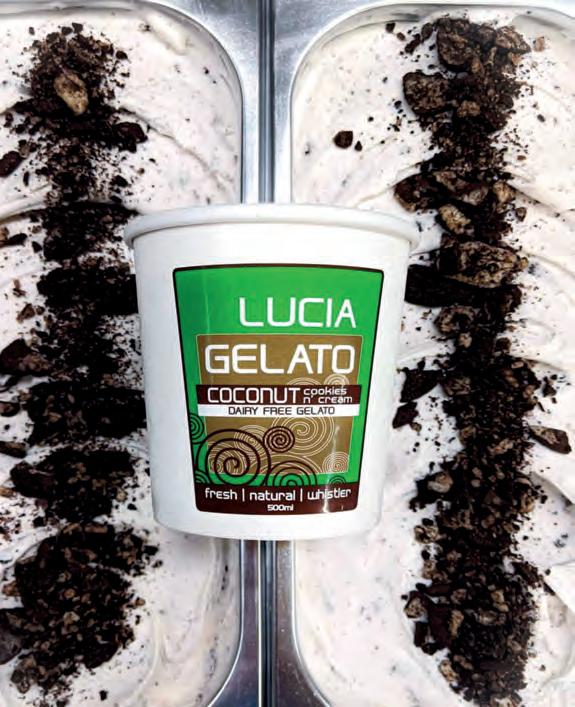





























My favorite job reminds me that working together is everything - By Laureli Ivanoff // High Country News
25 OPENING REMARKS It’s crafty, cozy season. Why not take up a new hobby that sparks joy in the dreary days of fall, writes interim editor Liz McDonald.
08 LETTERS TO THE EDITOR In this week’s letters, authors question Canadian’s obsession with US talk show hosts, call for solutions to roaming horses in Pemberton.
24 RANGE ROVER Conservation is at the forefront of research these days, writes Leslie Anthony.
46 PIQUE’N YER INTEREST Comedy is an essential piece of open democratic societies, writes Andrew Mitchell.
10 GARBAGE DECISION The RMOW explains its reduction in service to some public garbage bins.
11 THE WEDGE ISSUE A catchup with Whistler Search and Rescue on summer response volume, demographics and why Wedge is seeing increasing rescues.
30 DIRT DAYS Magalie Larouche finds success as late-blooming dirt biker.
34 AUDAIN WINNER This year’s recipient of the Audain Prize for the Visual Arts and its associated $100,000 prize is Brian Jungen.
COVER Some of my fondest memories of my mother were in the camp kitchen. Miss you mom. - ByJon Parris - Adobe AI // @jon.parris.art
Publisher SARAH STROTHER - sstrother@piquenewsmagazine.com
Editor BRADEN DUPUIS - bdupuis@piquenewsmagazine.com
Sales Manager SUSAN HUTCHINSON - shutchinson@piquenewsmagazine.com
Production Manager AMIR SHAHRESTANI - ashahrestani@piquenewsmagazine.com
Art Director JON PARRIS - jparris@piquenewsmagazine.com
Advertising Representatives
TESSA SWEENEY - tsweeney@wplpmedia.com
ANDREW BUDRESKI - abudreski@piquenewsmagazine.com
Digital/Sales Coordinator KATIE DOUGLAS - kbechtel@wplpmedia.com
Reporters
LIZ MCDONALD - emcdonald@piquenewsmagazine.com
LUKE FAULKS - lfaulks@piquenewsmagazine.com
DAVID SONG - sports@piquenewsmagazine.com
Office Manager HEIDI RODE - hrode@wplpmedia.com
Classifieds and Reception - mail@piquenewsmagazine.com
Contributors G.D. MAXWELL, GLENDA BARTOSH, LESLIE ANTHONY, ANDREW MITCHELL, ALISON TAYLOR, VINCE SHULEY, ALYSSA NOEL
Founding Publishers KATHY & BOB BARNETT www.piquenewsmagazine.com

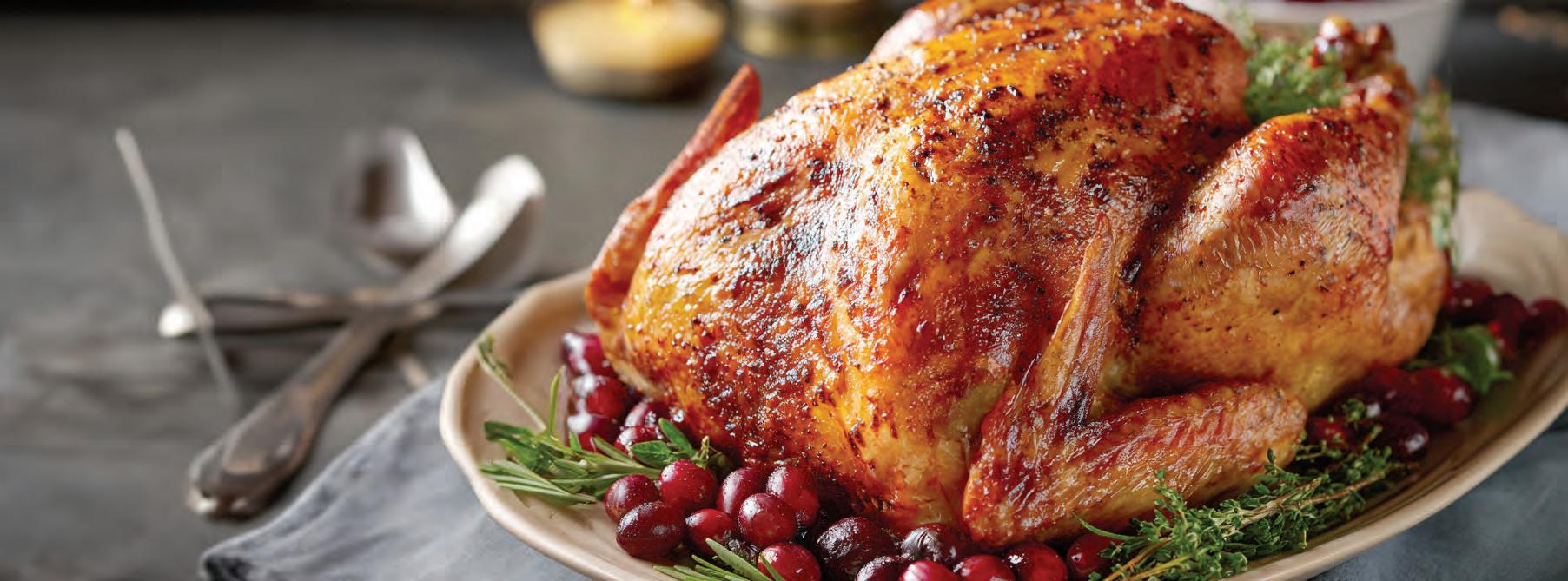














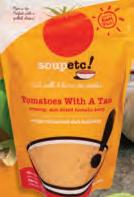






LEAVES CRUNCHED underfoot as I walked out of the art store with tools for a brand-new hobby. A chill wind nipped at my neck, and I wondered if my bag of goodies would become an obsession or fall by the wayside (apologies, yarn and ukulele—maybe one day I’ll reach for you again).
I carried my paper bag full of watercolours, cold-pressed paper and brushes home, where

BY LIZ MCDONALD
emcdonald@piquenewsmagazine.com
they sat on my desk for a single Saturday. The next evening, after making an early Thanksgiving dinner, I sat down and typed into YouTube: “how to paint water colour flowers.” While I could have searched for an in-depth tutorial or started with Watercolour 101, my needs were simple and practical: find a short tutorial by someone and copy them.
As someone who preferred drama and English lit over art in high school, I wouldn’t describe myself as naturally talented with a brush. And I’m still not. But after a 20-minute YouTube video, I’d learned how to paint five flowers with varying degrees of success: the difficult daisy, the easeful lavender, and so on. For whatever reason, I didn’t struggle with the brush and paint the way I do with the repetitive motions of crochet. Perhaps that’s thanks to childhood, when painting was part of the curriculum.
Or perhaps it’s because painting allows for, as Bob Ross called them, “happy little accidents.” When I crochet something—a scarf or a dishcloth—it needs to be done properly. It’s obvious if a row is off or a slip stitch has gone astray. I can undo my rounds and start again. That’s not really the case with painting. Sure, I can start over, but each piece exists in space and time: a permanent blob on a perfectly white page. And if I don’t like the blob, it still exists in my painting book—away from prying eyes, but a record of my mistakes and attempts.
flow state away from the attention-grabbing nature of cell phones and computers. In some ways, using YouTube for crafting is the best use of the internet. I’m not frenetically switching between apps, spiking my anxiety as I hunt for stimulation. By the time I finished, half an hour later, I felt centred, content and proud of my weird little creations. Were they exactly like the YouTuber’s? Of course not. But they were mine—beautiful in their imperfection.
While my anecdotal experience may be enough to convince you to pick up a
good,” according to the University of Calgary.
Or, as the World Health Organization puts it: “Since our earliest ancestors began telling stories to make sense of the world, we have evolved to learn from narrative, be it through visual media, song or performance. The arts are uniquely suited to help us understand and communicate concepts and emotions by drawing on all our senses and capacity for empathy.”
The WHO goes on to add that the arts ease strain during illness and injury,
“How novel, at this point in history, to privately keep a record of work that exists just for you. See also: permitting ourselves to make mistakes”
How novel, at this point in history, to privately keep a record of work that exists just for you. See also: permitting ourselves to make mistakes.
As I fumbled my way through brushstrokes (children’s Crayola brand, by the way—I’m not investing before I know I like something), I felt pulled away from the world and into the quiet intimacy of creating. I find that same space when reading, slacklining, running, sometimes writing. It’s a meditative bubble, a
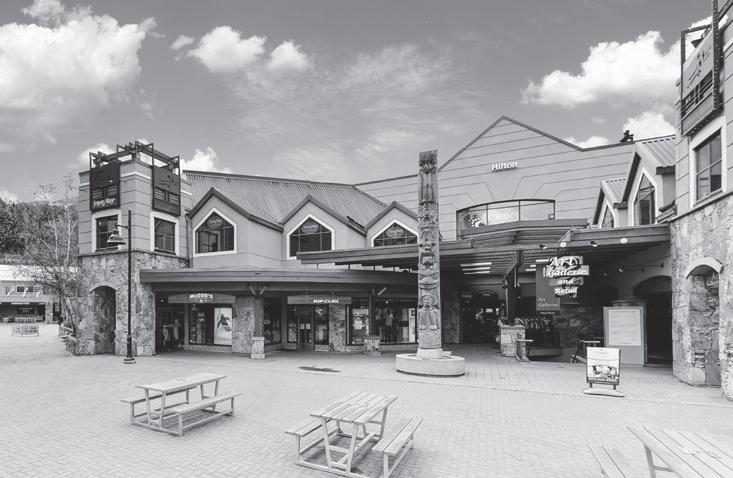

craft as we head into the chill embrace of fall—swapping sweaters for T-shirts and tea on the couch for days on the trail—there’s plenty of evidence that stepping away from stressors to create is good for mental health and well-being.
Research into the benefits of art has even created a new field of study called neuroaesthetics, which shows “there is physical, scientific evidence that the arts engage the mind in novel ways, tap into our emotions in healthy ways and make us feel
help process challenging emotions from traumatic incidents and can even create positive clinical outcomes for patients and their loved ones.
So, whether you turn to arts or crafts this shoulder season—for solace from serious injury, or simply to ease the low mood that comes with a lack of sunlight—I hope it brings you closer to your humanity, further from screens, and ignites passion and purpose through a time that can otherwise feel quite bleak. n
This top-floor2bed/2bath,1272sq feet apartmentintheheartof Whistler Village offersultimate flexibility—useitasapersonal residenceor vacationhomewithno Hilton HotelUnit Management restrictions. Juststeps fromthe Whistler&Blackcomb Gondolas, world-class restaurants,bars,andshops. Enjoyaccess to premiumamenities,including afitness center,spa,2undergroundparking spots,swimmingpool,andhottub. Call today formoreinformationor to bookaviewing! Askingprice$1,350,000 733/735-4050 Whistler Way












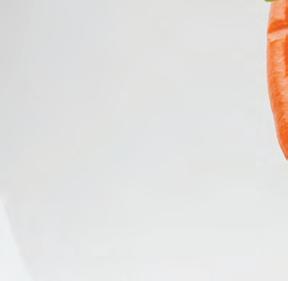





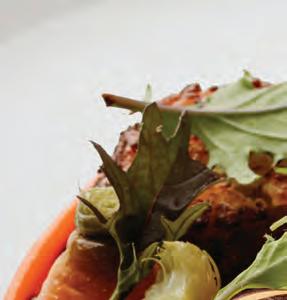
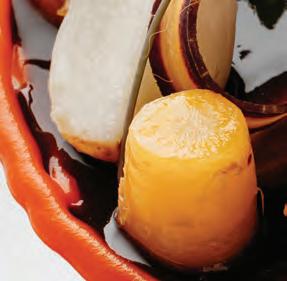


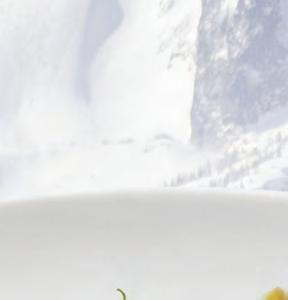

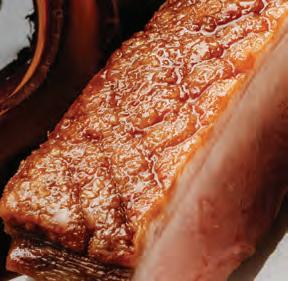
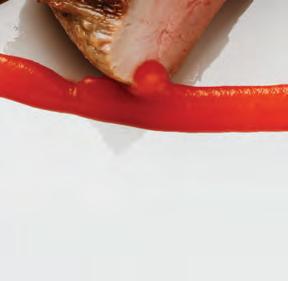

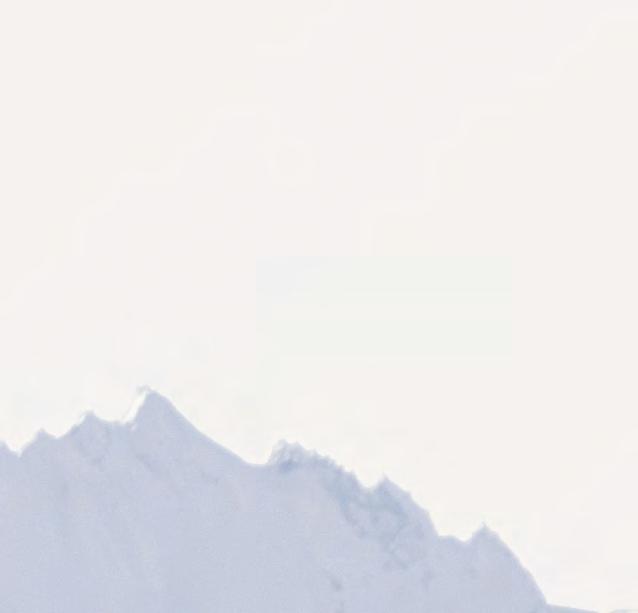


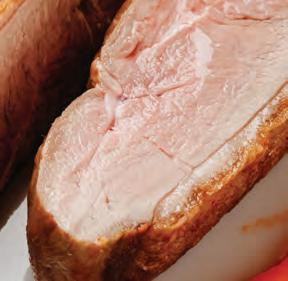


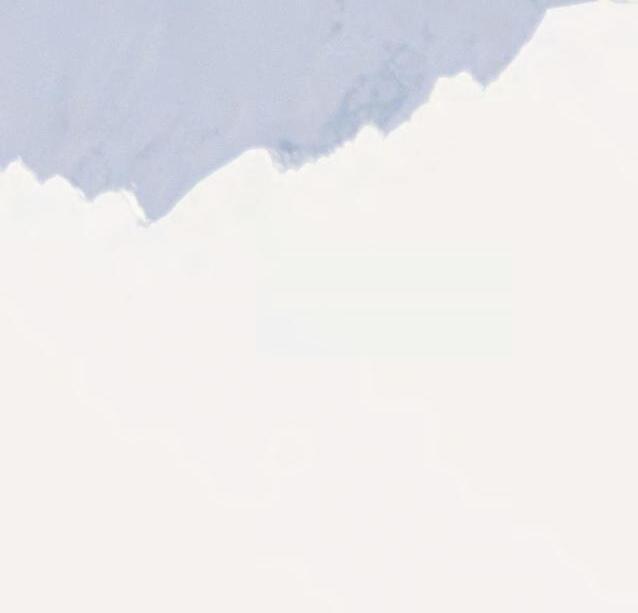

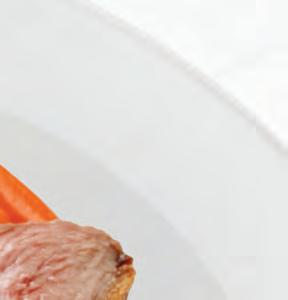

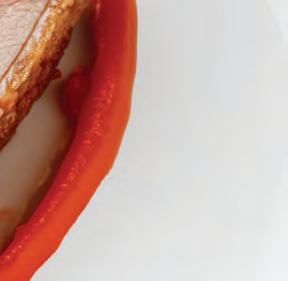








As a local physician and one of many first responders living near Pemberton Farm Road East, I am writing to raise urgent concern about the ongoing danger posed by the large herd of horses roaming Highway 99.
For most drivers, the horses are a nuisance at best and a heartbreaking sight at worst when collisions occur. For those of us on-call doctors, nurses, paramedics, firefighters, and police, they can mean the difference between life and death. When we are called to the Emergency Department or to a critical scene in the middle of the night, every minute matters. If we are delayed by horses standing or wandering on the highway, patient care is delayed — and that delay can have tragic consequences.
Each time I respond to a night call, I find myself wondering: Where are the horses tonight? I hope there is no fog. Will I hit one? Will I injure myself and delay care for the very patient I am racing to help? This is not just stressful — it is unsafe.
Just last week, after an overnight call, I came across three injured horses on the road

“This is no longer a simple nuisance, it is a public safety crisis.”
following a collision. Thankfully, the driver and passenger were unhurt, but the road was blocked. I could not help but imagine what would have happened if an ambulance, fire

truck, or police vehicle had needed to get through — or worse, had been the ones to collide with the horses.
Some have suggested lowering the speed

limit, but from my many night-call experiences, speed alone is not the issue. Horses can appear suddenly, even at very low speeds, particularly in low-lying fog. Slowing traffic may help, but it is not a complete solution.
This is no longer a simple nuisance, it is a public safety crisis. We need a long-term plan to keep both people and horses safe, whether through fencing, relocation, or another community supported intervention. Until action is taken, every single person who drives this road, especially those tasked with saving others, is at risk.
I urge local leadership, provincial authorities, and our community to work together before a preventable tragedy occurs. Waiting until a death happens will be far too late.
Sincerely,
Dr. Kate Coles // Pemberton Family/ Emergency Physician
Questioning people’s political priorities
Oh no, everyone stop the presses *****Jimmy Kimmel was shuttered!***** How did Canadians ever survive that whole one week without latenight monologues about U.S. politics?
Meanwhile… we still can’t post or share Canadian news on Facebook. Not even the Pique. But sure, let’s all cry about Hollywood while shrugging at the fact that access to our own journalism has been muzzled.
Priorities, we have really nailed it.
Regards,

Hugh Smythe // Whistler n


Ueligrew upin Switzerlandand came to Canadain 1968. HelivedinNorth Vancouver withhiswifeErnaand twochildrenEricand Tanja. In 1996he wasabletofulfillhis longtermdreamandmove to beautifulWhistler. He wasanoutdoorenthusiast, lovedocean kayaking,hiking, biking, skiing,campingandtravelling. Hewillbedearlymissedbyhiswife Erna sonEric,daughterTanja,soninlawJamie andgrandsonKiran.
e





















SAYS ABOUT 70
BY LIZ MCDONALD
THE RESORT MUNICIPALITY of Whistler (RMOW) is assuring residents and visitors that garbage can service is not being removed altogether this winter, despite a wave of concern sparked by signage and social media posts.
Over the past week, notices instructing park users to “pack it in, pack it out” appeared on some bins, prompting confusion and frustration on Facebook and in community conversations. Many assumed the municipality was eliminating waste services across public parks for the season.
Mayor Jack Crompton emphasized the move is not a new cutback but a long-standing winter adjustment, based on information from RMOW staff. Garbage volume in Whistler drops by approximately 83 per cent between the peak summer season and the quieter winter months, making it impractical to service the same number of receptacles year-round.
“This is not a new reality,” Crompton said. “Whistler has always reduced the number of receptacles in winter in response to demand. The difference this year is that communication was more visible, which has caused some concern. We can always be clearer in the way we communicate it and will endeavor to do so.”
While the reduction is routine, Crompton confirmed there will be a deeper cut than
highest, and those receptacles will remain open,” he said.
The municipality pointed to its website update on the changes, which aimed to clarify that residents “will only have to travel a short distance” to access waste services this winter. Still, Crompton acknowledged the messaging could have contributed to the perception of a blanket removal.
“This is not a new reality. Whistler has always reduced the number of receptacles in winter...”
- JACK CROMPTON
usual this season, citing staff data that shows 17 more closures than last year. Roughly 70 waste stations will remain in operation across Whistler.
Crompton said staff have assured council that the highest-use locations will not lose service. Parks such as Rainbow, Lakeside, Alpha Lake, Spruce Grove, Olympic Plaza and the Village parks will continue to have bins available.
“Those are the areas where volume is
Some of the adjustment stems from financial realities. Whistler experienced record-high garbage volumes this past summer, requiring additional staff time and payroll resources to keep up. As a result, a larger portion of the annual budget was spent during peak months, leaving less flexibility heading into winter.
“Council sets a fixed budget each year for waste services, and it doesn’t change midyear,” Crompton said, citing staff information. “This summer was extremely busy, and more of the budget was used to keep up with demand.”
On top of that, the cost of supplies continues to climb. Prices for essentials like toilet paper, garbage bags and dog-waste bags have increased by as much as 23 per cent since 2022, putting added strain on the parks and sanitation budget.
“Local government is not immune to inflation,” Crompton said. “We’re paying close attention, but it’s a moving target, with economic conditions and even tariff threats affecting prices.”
Crompton noted that council will have the chance to revisit waste service levels during the 2026 budget process. In the meantime, he encouraged residents to use RMOW’s Add Your Voice engagement program to share feedback on how municipal services, including waste management, affect them.
“Council is very interested in hearing from the community,” Crompton said. “The best way to help us understand how services are working is for people to come out to Add Your Voice events and share their thoughts. Over time, we hope this consistent opportunity every quarter will build awareness that residents can have a direct say in municipal priorities.”
More details on winter waste service can be found on the RMOW website: whistler.ca/ parks-recreation-culture/parks. n
‘Rocks the size of Volkswagens’: why Weart–Armchair became 2025’s most dangerous hike
BY LIZ MCDONALD
AFTER WHAT WAS a quiet June and July Whistler Search and Rescue (WSAR) operators witnessed a dramatic escalation in incident calls through August into September, culminating in a total of 36 calls between July 1 and September 30. Among the most frequented zones was the Wedge / Weart / Armchair traverse area, which drew 12 separate responses this season alone.
“We’ve never seen a summer start so slowly,” said Brad Sills, WSAR president. June and July were unusually quiet, with just a handful of incidents. But beginning in August, “it accelerated at an incredible rate,” he said.
From July onward, incidents ran the full gamut: sprains, broken bones, head injuries, but also more tragic outcomes. One notable case involved an Illya Rechytskyy, whose body was recovered from the Daisy Lake after being swept away in Cheakamus River.
In one dramatic case, a dirt biker was reported to fly off an 80-foot cliff onto rocks below. In another, a hiker accidentally discharged bear spray and became incapacitated. They subsequently became hypothermic while waiting for WSAR by attempting to wash off the bear spray, while WSAR’s response was delayed with wildfire smoke.
One of the most significant trends this year was the revival of what Sill called “climbing accidents” — rescues in terrain once considered technical and requiring mountaineering skills. The Weart / Armchair traverse, in particular, stood out. The WSAR team was called there 12 times in summer 2025, making it one of the most active rescue zones.
The terrain is often treated by hikers and trail runners as a “must-do,” especially with social media exposure raising its popularity. But as the mountains warm and glaciers recede, many of the rock faces and ridgelines are no longer solidly glaciated — newly exposed rock is inherently unstable. Sills cautioned that improper footholds or handholds may crumble, with falls often resulting in serious injury.
“The exposure is considerable,” the Sills said. “I’m not going to say you should always be roped, but if you’re not — you’re going to fall. And some of those falls will be significant.” He added that during rescues at Weart in unstable terrain, they often contend with rockfall hazards — “rocks the size of Volkswagens” have come close to rescue teams.
One possible driver of increased traffic — and risk — toward Wedge / Weart / Armchair is the recent introduction of day-use vehicle passes required in Garibaldi Provincial Park. Since 2020, BC Parks has required seasonal vehicle passes at three key trailheads (Diamond Head, Rubble Creek, and Cheakamus) as part of visitor management efforts.
Sills speculates that because Wedge / Weart is among the few high-risk alpine routes without a pass requirement, frustrated or turned-away visitors at the other trailheads are being diverted there.
“Wedge is the only other one that’s not required,” he said, in reference to day-use pass control. The access shift may push more inexperienced or under-prepared parties into terrain beyond their capabilities.
Over recent years, the Wedge route has developed a reputation as a serious mountaineering challenge. But with social media-driven popularity, many participants may not fully appreciate its changes. Some SAR interviews suggest hikers were well beyond their skill level but had committed because of its visibility online.
The rescue team noted several recurring themes in 2025:
A majority of incident calls are visitorgenerated, not from residents. Local mountain biking cases exist, but are comparatively few (perhaps 3 of 37 total).
Many who require rescue are young (under 30), newcomers or visitors, lacking deep familiarity or preparation for alpine terrain.
A recurring rescue trigger is inappropriate footwear — sprains and ankle injuries are disproportionately common and might often be prevented with more robust boots.
The culture of calling for rescue assistance is increasingly ingrained: people are less inclined to self-rescue or back out early when conditions deteriorate.
To counter the trend, Sills strongly recommended the Adventure Smart program as a vital resource for would-be adventurers. Previewing routes, understanding expectations, and pacing ambition to skill level can make a meaningful difference, he said.
Operationally, the team also noted their increasing cooperation with neighboring jurisdictions: they assisted Squamish and Pemberton SAR teams, supported helicopter rescues, and extended help to Vancouver Island earlier in the season. They have also adopted a drone program — in partnership with Squamish SAR’s












•Brightsouth west viewsona 20,000sqft+lot
•Vaulted ceilingsandexpansive windows
•Designedwithseamless flowandtimeless elegance
•Every detailthoughtfullyappointed









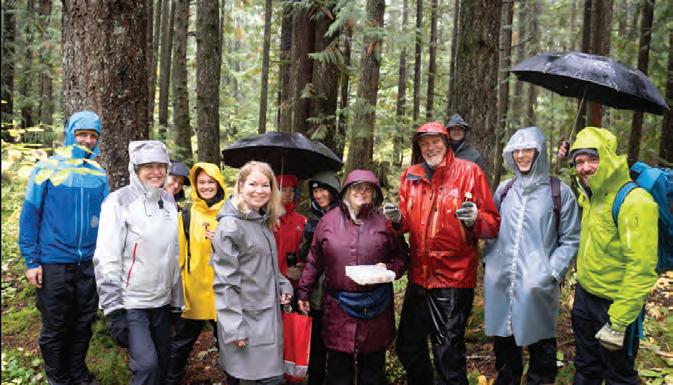
BY
VARIOUS NATURE WALKS, SEMINARS AND DISPLAY TABLES WILL BE AVAILABLE AT THE LEGENDS HOTEL AND THROUGHOUT WHISTLER
BY DAVID SONG
THE 23RD EDITION of the Fungus Among Us Mushroom Festival is on its way.
Bob Brett and his fellow Whistler Naturalists have long desired to bring Squamish and Mount Currie into the event. They’re making it happen this year with an Oct. 17 session featuring Indigenous herbologists: Leigh Joseph from Squamish and Mount Currie’s Holly Bikadi.
“First Nations people used whatever was around them for food…and with fungi also for dyeing and starting fires,” Brett said.
“[Leigh and Holly] are being joined by Andy MacKinnon, who is providing a bit more of a scientific angle on ethnomycology: the study of fungi. I would say that it’s something most people have never heard of…and I think it’s going to be an interesting angle.”
Speaking of Mount Currie, event organizers are continuing to engage local youth by presenting to students at Xet’ólacw Community School and multiple Whistler schools on Oct. 16 and 17. Conservation is a key goal for the Naturalists, who have realized previous success getting youth away from their screens and into nature.
Also taking place Oct. 17 is a seminar by Ann McCall and Elora Adamson about the fungi naming revolution. These organisms were traditionally identified based on their relationship with other lifeforms, but advancements in DNA and molecular-based technology are driving widespread change in scientific nomenclature.

Meanwhile, submissions to the Fantastic Fungi Foto Contest are accepted on social media as long as they are taken in the Sea to Sky corridor, and will remain open until Oct. 13. Multiple entries per person are allowed.
“The purpose is to get people involved out in the woods,” remarked Brett. “Most people use smartphones, others use professional standalone cameras. Our winners in the last couple of years: a couple of them were under 10 years old and others were professional photographers.”
‘PROTECT
It might be easy to overlook the mushroom display tables that will be set up on Oct. 18 in Legends Hotel, but Brett encourages guests to check out these free exhibits.
“It’s the fastest way to learn a lot about mushrooms because we have over 150 species labeled on the tables,” he explained. “Their names, some special characteristics, edible, not edible, what they smell like, what they taste like, that sort of thing. There are experts behind each of the tables to explain more about them, and our goal is to get more people than ever out to those.”
Earlier that day, festival-goers will have a chance to spend three-odd hours in the woods with some of British Columbia’s top fungal experts at locations ranging from Millar’s Pond and Cheakamus to Emerald Forest and the Callaghan, with kids under 12 years old receiving their own route around Lost Lake. These guided walks take place rain or shine.
Moreover, Bruce Worden returns to share his quality assortment of mushroom recipes. He’ll be dealing both with fungi he personally obtained and those supplied by Nesters Market.
“[Bruce] has done it for a lot of years and he’s a really creative, professional chef,” Brett said. “He’s got a real love of mushrooms and cooking with them, so he brings new recipes every year…describing how to prepare the mushrooms and then serving the result to the participants. Really interesting stuff, from savoury to sweet.”
About the growing influence of fungi in the public eye, Brett added: “Mushrooms are in the general consciousness throughout British Columbia and probably North America more than ever. We got just ahead of that when we had our first event in 2003, and I feel like we’ve been riding the wave. It’s all really good because you want to protect what you love. If you love the mushrooms, and the mushrooms need the trees to survive, then you’re going to want to protect the forest.”
Visit https://www.whistlernaturalists.ca/ fungus-among-us-mushroom-festival for more details on the 2025 Fungus Among Us Festival. n










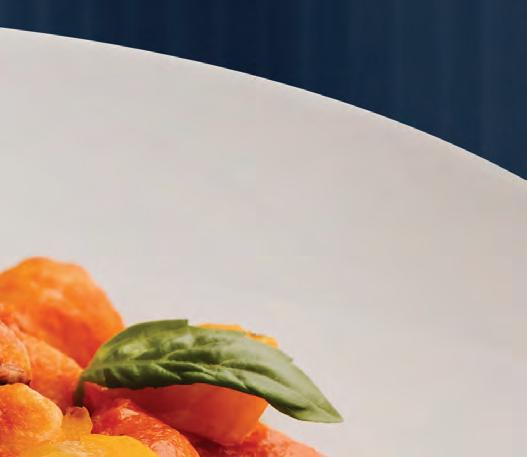
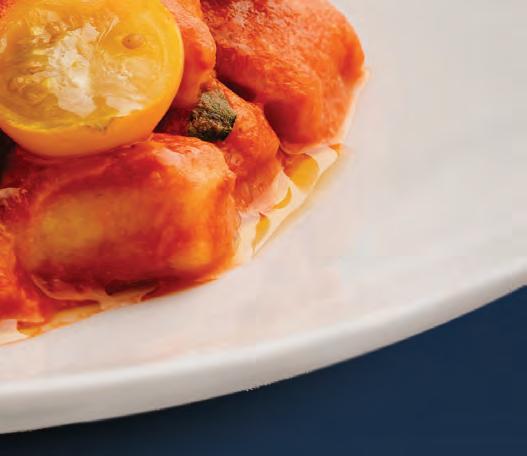





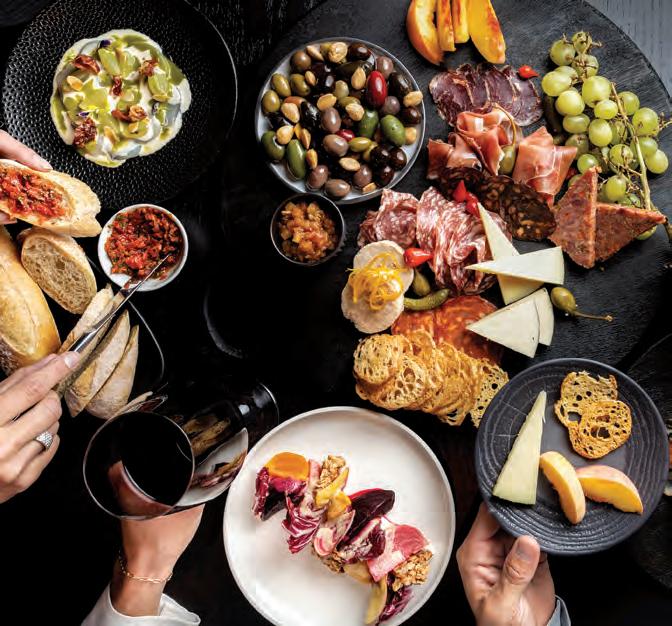

COMMUNITY KITCHEN KICKS OFF ITS FIRST MEAL OF THE SEASON SEPT. 29, AIMING TO FIGHT FOOD INSECURITY AND FOSTER CONNECTION
WHISTLER RECREATE Our Community Kitchen Society (ROCKS) has started offering free or by donation meals once again. Its first event of the fall season started Sept. 29, at 2028 Rob Boyd Way in Creekside.
ROCKS was created by Natalie Kingi several years ago to help address food insecurity in Whistler. Her project reimagines the soup kitchen as a communal dinner where everyone is welcome. And while the evening’s meal is by donation, she said the goal is to create a dinner party where people from all walks of life can meet and connect.
New this year, ROCKS has access to the Whistler Mountain Ski Club, with receiving a temporary food permit to run the program from Vancouver Coastal Health. The club’s current licence doesn’t permit the use ROCKS needs.
When asked why the club was chosen for dinners, she said it “ticked all the boxes.”
“It holds 70 people, it’s central, accessible by bus. You don’t have to pay for parking to get to it,” she said. “Their primary purpose is obviously for their members and athletes. But you know, when the members and athletes aren’t using it—like after 4 p.m. on a Monday—it’s available.”
The transit access and free parking aspect were especially valuable for Kingi.
“If you’re experiencing poverty, experiencing food insecurity, and then you have to go to an event and pay $10 for parking, and $5 here and $5 there, it changes an evening out, right? The purpose of these meals is for everyone to have access to an evening out.”
She works with Whistler Community Services Society (WCSS) and cited its recent AGM, which showed food bank use increased 23 per cent in 2024.
“The same people who use the food bank are our primary demographic we’d like to come to ROCKS. It’s really nice to get food
from the food bank, but it’s also nice to go out for a hot meal. That’s the gap that exists in Whistler at the moment.”
Kingi’s background in food and her experience moving to Whistler puts her in a unique position to understand the financial insecurity many here face, while now having the means to help others.
Food supply comes from local grocers Kingi has asked for assistance who supply items at wholesale cost, and she also makes Costco runs to buy food in bulk. She’s using funds provided by 100 Women Who Care Whistler, which donated $15,000 this year. Her aim is to deliver 1,000 meals using the funds, cooking from scratch while recognizing she’s privileged to know how to do so—and to have the space to store bulk food.
“Everyone else could do it, but not everyone else has the kitchen, has the space, has the means and the education as well.”
The dinner menu includes options to please both omnivores, vegans and gluten free folks, prioritizing simple, healthy ingredients.
Another impressive aspect is the quick turnaround time volunteers have to prepare the meals.
“We’ve got a two-hour window to prep 100 meals, so we have to be very cautious and well-planned about what we’re going to do.”
Winter menu ideas include stews and curries, using lentils and chickpeas because they’re healthy, economical and incredibly versatile.
“Some people don’t know what to do with chickpeas. Some people don’t know how easy and fun they are. So, you know, we try to showcase that,” she said.
The following dinners are scheduled for Oct. 27 and Nov. 17. Kingi said she’s hoping for a more regular rhythm pending community support and volunteers.
Anyone looking to volunteer can find out more online at whistler-rocks.ca. n
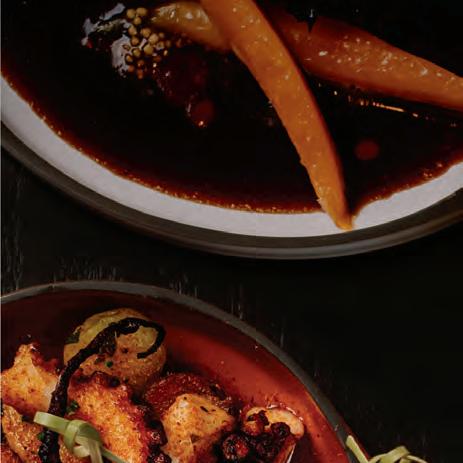

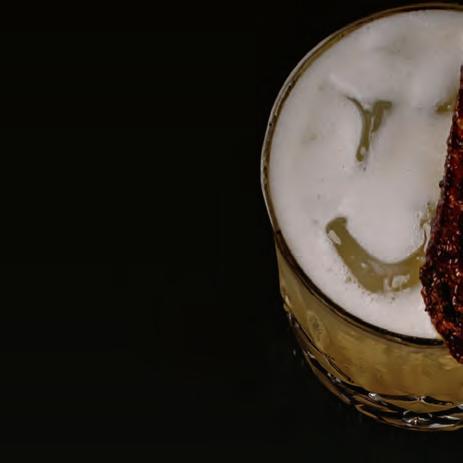
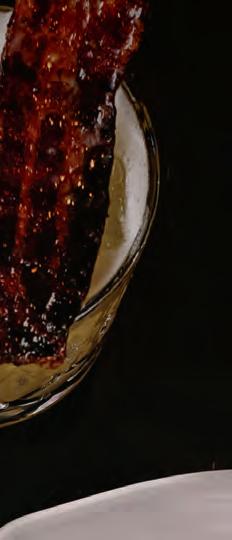


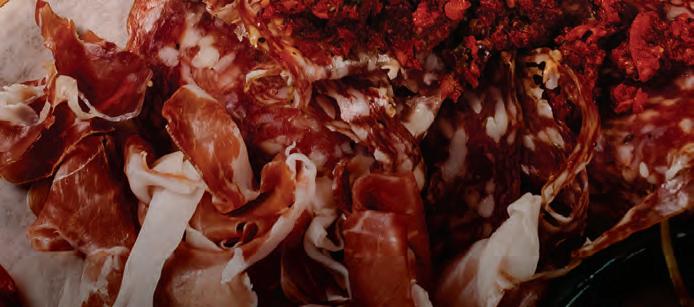

BY LUKE FAULKS
Local Journalism Initiative Reporter
VAIL RESORTS, the owner of Whistler Blackcomb, reported higher profit for the fiscal year ended July 31, 2025, and sketched out a plan to rebuild skier visits—especially from day-ticket buyers—heading into the 2025/26 season.
The company reported that net income increased to $280.0 million in fiscal 2025, up from $231.1 million in the prior year. Earnings before interest, taxes, depreciation and amortization (EBITDA) inched up 2 per cent to $844.1 million.
Despite those higher profits, Vail said pass units through Sept. 19, 2025 were down about three per cent, while pass sales dollars were up about one per cent versus the same point last year, balanced out by a roughly seven per cent price increase.
Chief executive Rob Katz acknowledged that the past season underperformed and laid out steps guests may notice.
“Our approach to engaging with guests has not kept pace with shifting consumer behaviors,” Katz said, adding that the company has been “slow to shift to new and emerging marketing channels” beyond email. He said Vail
will “shift more focus to marketing our lift ticket business” alongside passes.
One concrete change is a new perk for passholders that is designed to bring more friends to the hill:
“In August, we introduced Epic Friend Tickets, a new benefit for 2025/2026 Epic Pass holders giving them the ability to share discounted lift tickets with family and friends,” Katz said. Vail expects these tickets
essentially, broader awareness advertising—so that occasional skiers and riders become aware of its mountains and offers.
The company hopes that digital tools will get customers’ attention.
Katz said Vail sees “tremendous opportunity to continue to enhance the My Epic App [with] native commerce and key payment integrations to increase guest purchase conversion,” and to expand
“Our approach to engaging with guests has not kept pace with shifting consumer behaviors.”
- ROB KATZ
to draw new visitors and, later, convert some into passholders:
“The full value of the ticket can be applied towards a future pass purchase, which we expect to be a powerful tool for future pass conversion,” he said.
Beyond discounts, Vail said pricing will be more targeted “by resort and by time period,” which could mean sharper off-peak deals at big destinations like WB. The company also plans to increase “top of funnel” marketing—
“influencer partnerships” and social content so messages reach people where they now spend time online.
For operations, Vail highlighted a twoyear efficiency program that it says is on track. The company delivered about $37 million in savings in 2025 and now expects about $75 million in 2026. Both figures represent the savings before “one-time costs,” like the CEO transition.
This release did not announce new
Whistler Blackcomb lifts or terrain expansions for 2025/26.
The highlighted capital spending focuses on Park City (new gondola and base upgrades), European resorts (Andermatt-Sedrun and Crans-Montana), Perisher, and technology like the My Epic App and the AI tool “My Epic Assistant.”
Vail said it will unveil its full 2026 capital plan in December.
Looking ahead to the year ending July 31, 2026, Vail is projecting a slightly higher EBITDA of $842–$898 million and lower net income of $201–$276 million, assuming “normal weather conditions” and current exchange rates. That financial forecast and can change with snow, the economy and travel patterns.
For WB users, the takeaways for the season ahead are to expect more lift-ticket promotions (especially off-peak), passholdershareable Epic Friend Tickets, and a more capable My Epic App for buying, planning and on-mountain decisions.
For Katz, the “immediate priority is increasing guest visitation to our resorts,” while also “reaccelerat[ing] growth of our pass program” over time.
The 2025-2026 season at Whistler Blackcomb is set to kick off on Nov. 21. n








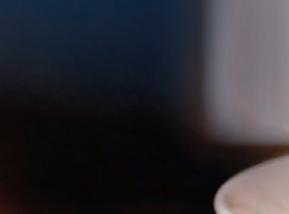
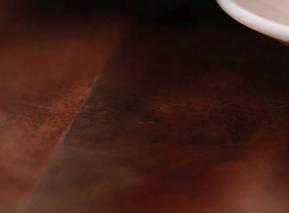









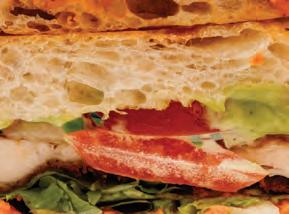
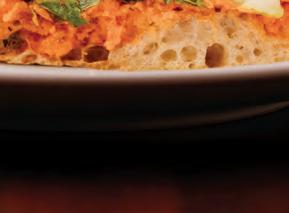


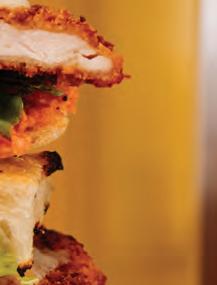



The Resort Municipality of Whistler from time to time recognizes certain persons in the community who have contributed of themselves to help make Whistler a better place for all to enjoy.
The community recognizes these outstanding contributions by declaring them: “Freeman of the Resort Municipality of Whistler”
BY BOB BARNETT
IN THE LATE 1970S and early ’80s summer in Whistler was considered construction season, the time of year when efforts — and money — were focused on building the village and Blackcomb. The valley’s potential for summer recreation was almost an afterthought.
Almost.
Trevor Roote was one of those who recognized summer in Whistler could be special.
“Whistler Village was being built and the two mountains and everyone was gung-ho,” former Parks planner Tom Barratt recalls. “And as Trev put it to me: No one was talking about parks. If we don’t do something we won’t have any parks.”
Whistler has parks. In fact, it has a “parks system” — a series of parks and recreational facilities from one end of the valley to the other, linked by the Valley Trail. That it was largely built before the municipality had an official Parks Department reflects the gap between the town’s priorities and Roote’s.
When Barratt was hired in December, 1981 he worked under municipal engineer Doug Wylie. His other boss was Trev Roote, chair of the Advisory Parks and Recreation Commission from 1979 to 1984.
“There was no authority to deal with parks, it was the Parks Commission, so it had a much greater mandate and role than it does today — in part because Trev Roote had a very strong personality,” Barratt says.
“To me the most important role he played — he was involved in properties and a big part of what we did was property acquisitions, rights of ways. That was how the Valley Trail was built,” Barratt continues.
“Some of it was contentious. Trev was able to play the role. He would say ‘I’m just doing this for the community.’ Because he wasn’t a municipal official; he did that really well.”
The Valley Trail is the link that makes Whistler’s parks work. While municipal officials were building the first sewer lines, Trev ensured rights of way were included so the Valley Trail could parallel the sewer. Rights of way on private land and crown land also had to be acquired.
“He pushed and pushed. He ruffled a lot of feathers, in a good way,” Barratt says. “He once said to me, ‘Tom, you’ve got to be a bulldozer.’”

While Trev Roote is rightfully credited with making it happen, some of the concepts originated in a 1976 recreation report that recommended a “valley trail of a minimum 12 foot wide, dust-proof surface.” That was repeated in a 1980 Outdoor Recreation Master Plan — the PERC report — that also called for a valley trail to connect parks and recreation facilities.
Importantly, the PERC report led to a referendum to raise $2 million to acquire land and build parks.
Whistler’s resident population, according to the 1981 census, was 1,300. The number of weekend residents who owned property, and were eligible to vote in the referendum, was probably less than 1,000. Individual voices carried a lot of weight.
“I think Trev and people, to get that referendum passed, to get people to vote for it, really needed to convince them this was for them,” says Barratt. “At the time there was a perception that the village was separate. ‘It’s not the community. What are they doing? Oh my god, they’re destroying Whistler.’
“There was this distinction of what was community, what was resort and what was commercial. It was a big deal.”
The timing of that referendum, just before the 1982 recession hit, was also critical. Village construction and real estate sales slowed to a glacial pace. But thanks to the referendum, there was money to spend on parks. Carpenters, plumbers, real estate agents were all applying for summer jobs building trails and bridges.
“We were almost the only game in town,”
Barratt says of the 1982 and ’83 summers.
Lost Lake Park, which was crown land acquired from the province, was first to benefit from the referendum. The development of hiking, biking and crosscountry ski trails and beaches at Lost Lake brought the Parks crew credibility with the locals. That was important given the resort-community dichotomy at the time.
As Meadow Park was added and the trail network expanded the distinction between resort and community began to blur.
“Finally, we (Parks) realized: a need is a need,” Barratt says.
But not everyone realized it at the same time. Take, for instance, paving the Valley Trail. “One area we butted heads — big time,” Barratt says.
Trev, who was also active in parks development in the Lower Mainland, viewed Stanley Park and its naturalsurface trails as the model. Barratt studied at the University of Oregon, where the city of Eugene has an extensive system of paved bike trails.
With Doug Wylie’s backing, Barratt took pictures of the trails in Eugene and presented his case for paving to council.
“Basically, what I was doing was an end run around Trev and the Parks Commission,” Barratt says with wry smile. “Well, the shit hit the fan. Trev went ballistic, so did some of the Parks commissioners. I got hauled into the administrator’s office. He showed me a memo. It was basically saying I was fired.”
But Administrator Geoff Pearce made his own decision.
“He said to me: ‘Tom, we have enough gravel trails.’ And he threw that memo into the wastepaper basket.”
Barratt says Whistler’s moms saved his job. “Because they could kick the kids out the door and ride to the village, without going on the highway.
“And to Trev’s credit, he said: ‘Well, I guess you’re right. I guess people want paved trails.’
“He was so stubborn, so demanding, so much of a bulldozer, but he would give in. And once he gave in, he would support you. Totally.”
The paving of the Valley Trail, and its expansion to Alpine Meadows and Creekside, opened new perspectives of the valley previously only seen from the highway.
“The Valley Trail, you’d ride out to Alpine. That was… huge, huge,” says Barratt. “And the novelty of riding on the Valley Trail, that just blew people away.”
Whistler’s parks system would not exist without Trevor Roote and the countless hours he volunteered as chair of APRC, Barratt says. He was awarded the Freedom of the RMOW for his work in 1984.
“He was a bulldozer with APRC,” says Barratt. “The members pretty much nodded their heads.
“But he got it done! I think that’s his biggest legacy, he got it done. He pushed the right people, got the right properties. He got it done.
“Without that it might have been — I’m sure it would have been — a lot of missed opportunities.” n
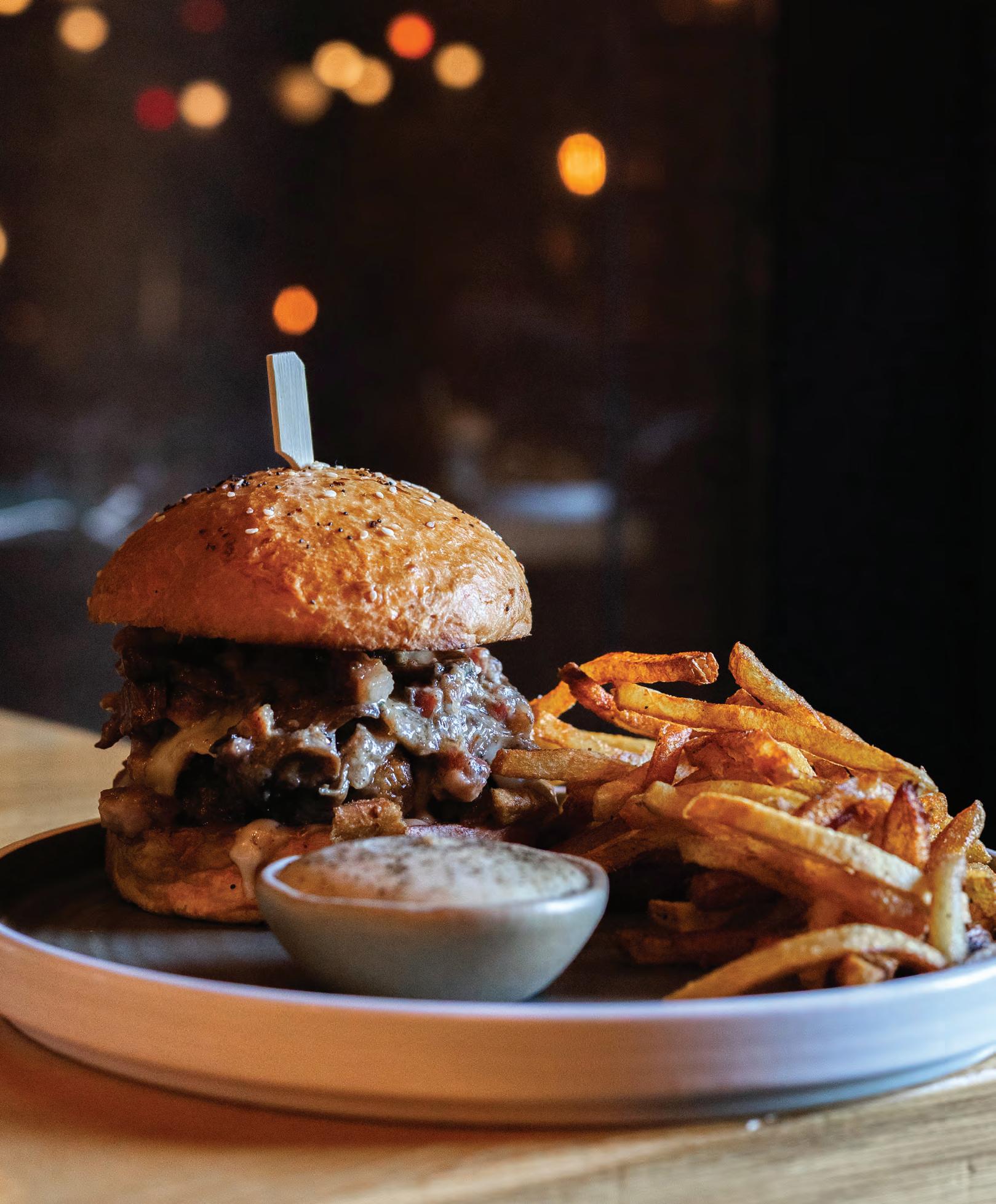
BY LUKE FAULKS
Local Journalism Initiative Reporter
MULTIPLE HORSES were struck by vehicles on Highway 99 north of Pemberton in the early hours of Sept. 20, reigniting longstanding safety concerns about the busy corridor and prompting renewed community calls for government intervention.
“On September 20, 2025 at about 4:45 a.m. our Pemberton Detachment RCMP Members received reports of a collision involving a vehicle and horses on Highway 99,” a detachment spokesperson said. “The vehicle involved did sustain damage however there were no injuries to the driver.”
The spokesperson confirmed two horses were euthanized by an officer at the scene and a third horse was euthanized “a short distance away.”
The incident follows years of accidents and near-misses involving free-roaming horses on the highway, a stretch frequently identified by residents as hazardous due to sharp curves, poor visibility and high speed limits.
In the days following the collision, local resident Elkie Webb launched an online petition urging the province to reduce speed limits, improve signage and consider physical crossings or barriers to protect animals and drivers alike. The original petition garnered 140 signatures to date.
“Living along Hwy 99, I witness the daily dangers posed to everyone using this road,” Webb wrote in the petition text. “Frequent accidents on Hwy 99 bring heartbreak and divide our community, underscoring the urgent need for stronger safety measures.”
The petition calls for lowering the 80 kilometres/hour speed limit between the Pemberton Creek bridge and Mount Currie to 50 kilometres/hour, with stricter limits at night alongside clearer wildlife warning signs and engineered crossings.
In an interview, Webb said the community has shown both support and resistance to reducing speeds.

“Some people travelling through the Valley want to make their commute quicker and have decided that the extra minutes saved are worth it [even] if it comes at the expense of slowing down through communities along the highway,” she said.
“Many community members, including myself, have been advocating for changes for years because of concerns about family safety and the daily experience of using this highway.”
While past efforts have led to incremental improvements such as additional signage, Webb said those changes have been insufficient.
“Many safety concerns—speed, visibility, and community risk—remain, so progress has been slow,” she noted.“The signage can still be confusing for drivers. Suggested limits aren’t always clear, and combined with legal and political uncertainties, it’s hard for drivers to know how to respond.”



She noted that while the Village of Pemberton can support residents, ultimate authority lies with the provincial Ministry of Transportation and Transit (MOTT), which manages the Highway. The Village of Pemberton has made similar comments during past discussions on the issue. In February, the Village announced they had partnered with the Ministry of Agriculture to write to MOTT, proposing an 80 to 60 kilometres/hour speed reduction.
“Meaningful action depends on clear, enforceable decisions and follow-through,” Webb said. “The ultimate jurisdiction for changes like speed limits remains at the provincial level … all [the Village] can do is support the petition and advocate for action.”
Kate Coles, who works in the Pemberton
Emergency Department, said the presence of horses on the highway risk impeding first responders travelling North from the Village.
“Each time I respond to a night call, I find myself wondering: Where are the horses tonight? I hope there is no fog. Will I hit one? Will I injure myself and delay care for the very patient I am racing to help?”
For Coles, the situation requires a conversation beyond just a speed reduction.
“Some have suggested lowering the speed limit, but from my many night-call experiences, speed alone is not the issue. Horses can appear suddenly, even at very low speeds, particularly in low-lying fog,” she wrote.
“We need a long-term plan to keep both people and horses safe, whether through fencing, relocation, or another community supported intervention. Until action is taken, every single person who drives this road, especially those tasked with saving others, is at risk.”
The RCMP told Pique that there isn’t an investigation into the horses’ owner, and that the current “file has been concluded.”
The Village of Pemberton has received Webb’s petition and has it listed under “correspondence for information” ahead of the Oct. 7 council meeting. Under council policy, it has not yet been added to an agenda for formal discussion.
In a statement, the Village said the petition was submitted as correspondence only because it lacked petitioners’ names and addresses, as required by council policy. If resubmitted in proper petition form before Oct. 1, the matter could be added to the council agenda.
“I’m cautiously hopeful,” Webb said of the Village’s next steps. “It’s good that the issue is being discussed, but meaningful action depends on clear, enforceable decisions and follow-through.”
Until then, residents say the danger will remain.
“Waiting until a death happens will be far too late,” Coles warned. n



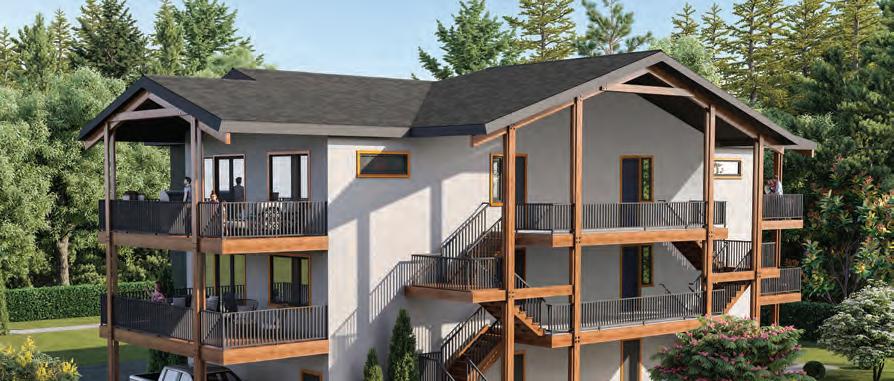
A new community in Pemberton, designed for Sea to Sky families.

Own a brand-new 3 bed, 2 bath home with: Laundry/mudroom
Large garage
Covered deck
Full-size kitchen
Open concept living
Central heating and cooling
Energy-efficient, Climate-resilient design


THE PEMBERTON BAND WILL CELEBRATE THEIR SECOND RELEASE AT BRACKENDALE ART GALLERY ON OCT. 3 WITH SPECIAL GUESTS THE HAUSPLANTS
BY LUKE FAULKS
Local Journalism Initiative Reporter
PEMBERTON’S INDIE soul-rock quartet
The Zummers are taking another leap forward in their whirlwind year, premiering their second single Pour No More ahead of a celebratory release show at the Brackendale Art Gallery (BAG) on Oct. 3.
The track, a tongue-in-cheek R&B slow jam, marks a turn from their August debut single, Grenoble. Where that song brought critical acclaim with its driving, groove-laden energy, Pour No More leans into falsetto vocals, sly humour and a sensual soul-ballad homage that band frontman Tom Csima admits started as a bit of a joke.
“When The Zummers started, we mainly played songs that I had already written and composed and just adapted to the band, but we quickly began to progress and share ideas and collaborate,” Csima explained to Pique
Then, guitarist Alex Drapeau came forward with an old riff that carried a “very sexy” quality, and the band immediately knew it could form the backbone of something new.
“I dug through some old lines/verses I had on my phone, as I often write some little quips when they come to me, and found the basis for Pour No More,” Csima said. “It not only fit the vibe of the song, but was in perfect meter
with the riff. Couldn’t have planned it better, to be honest.”
The song tells the story of a man haunted by the memory of an ex before stumbling upon an adult film star doppelgänger.
“Not only does it bring back all the memories and desire and lust that took so long to forget, but also becomes an unhealthy addiction,” he said, swearing that the narrative is “mostly fictional.”
One of the track’s defining features is Csima’s falsetto, which he said was shaped as much by circumstance as by artistic intent.
“It was mainly a result of the key Alex was playing in, which was in between my comfortable vocal range, and it sounded better singing it high than low,” he said. “Also, being a slightly cheesy/sexy song, I did it partly as a joke to start. [I] definitely had my doubts, but the guys convinced me to keep it up, and yeah, I’d say now it certainly fits the whole theme of the song.”
Layered over Drapeau’s riff are hypnotic bass lines from Jessie Richards and multiinstrumentalist Mikey Muscat on both drums and saxophone.
The finished product, with its sly humour and “unapologetically seductive vocals,” nods
to Prince while drawing comparison to Beck’s cult-classic Debra
The release follows Grenoble, which quickly gained attention around the world through streaming services, social media rollout, and live performances.
“We were definitely testing the waters a little bit and not sure what to expect, but it’s
“Maybe we’re taking a risk...”
- TOM CSIMA
very interesting to see the streaming data and see that we’re getting played by people around the globe,” Csima said.
With Pour No More, the band hopes to extend that reach while showcasing another side of their musical personality.
“Maybe we’re taking a risk, with this one being a slower, less mainstream R&B jam, and we definitely have other songs that might be more conventional ‘radio hit’ style songs,
but we figured we’d go for it, and really show people what we’re about,” Csima explained.
“Also, Mikey busting out his Sax on this one, how could we not?!”
The Brackendale Art Gallery show doubles as a homecoming for The Zummers. In January, the band won the inaugural Battle of the Bands at the Gallery. Since then, the group has played festival stages across the province, from Hudson’s Hope’s Peace Valley Folk Festival in July to the Whistler Village Beer Festival earlier this month.
On Oct. 3, they’ll return to the gallery with Vancouver’s independent post-punk trio The Hausplants opening the night at 8:30 p.m. Tickets are available in advance for $15 online or $23 at the door.
Between the eclectic shimmer of Grenoble and the sultry pull of Pour No More, Csima said the band’s identity remains rooted in one thing:
“I think the common thread in all our music is the Groove, and these two songs are definitely juicy with that, while also being very different from one another.”
Check out the Zummers’ newest groove beat, Pour No More, when it drops on Spotify and Bandcamp. n






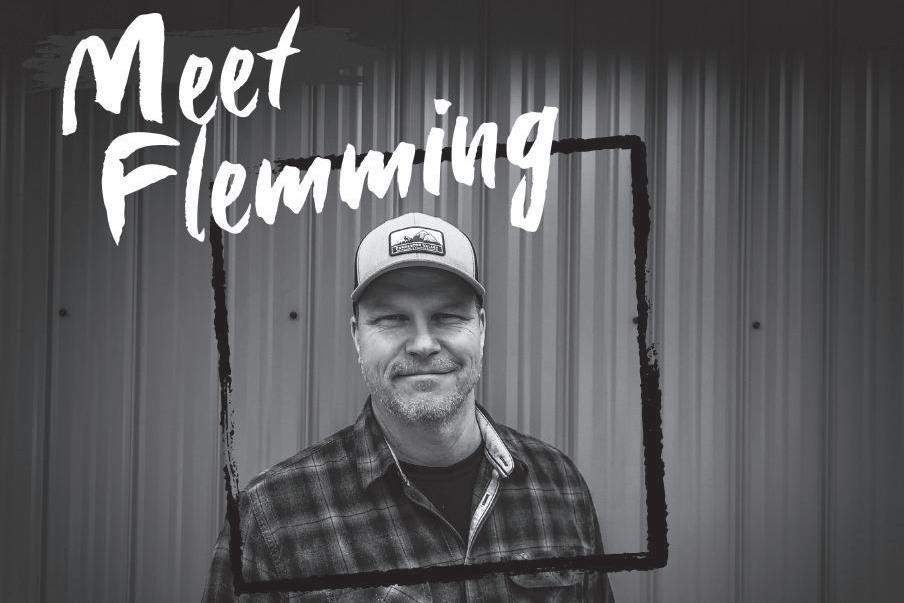



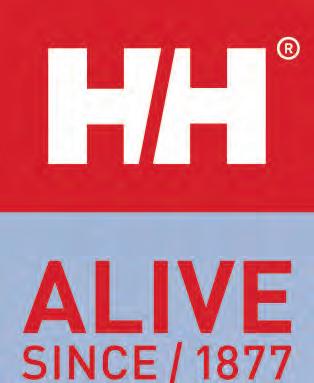








THOUGH DIFFERENT facets of animal biology were, in the past, investigated for their own inherent contributions to our knowledge of life, in these days of rabid pollution, burgeoning disease, invasive species and unabating habitat destruction, most studies are now carried out for, or at least in conjunction with, conservation objectives. I recently looked in on today’s investigations of the relationships, distribution, habitat use, reproduction, physiology, behaviour and

BY LESLIE
ANTHONY
myriad threats to reptiles and amphibians at the annual Canadian Herpetological Society conference in Québec City.
Let’s start with attempts to understand how animals distribute themselves in an environment and behaviours associated with this—generally crucial to conservation efforts. In the past such data were elicited through visual observations or tracking via radio-telemetry, in which small transmitters are either affixed to or surgically implanted within animals—a costly, meddlesome methodology. Subsequently finding and following these animals could also be difficult for biologists because the receivers carried to track the radio-signal were bulky affairs that limited where you could take them. But things have changed with the advent of drones—at least for larger animals.
One interesting study looked at freshwater basking behaviour in turtles, essential for thermoregulation but a time investment that detracts from other critical activities like foraging and mate-seeking. Previous studies had suggested that patterns of this behaviour may vary by sex and season—likely due to the reproductive demands of females. However, traditional shore-based observations had been limited by visibility, the potential of observers disturbing the turtles, and infrequent sampling. Here, researchers used drones to fly a pre-programmed route over a wetland every 20 minutes throughout the day, every day, filming basking turtles marked with large
abstract put it. A DNA study of Massasauga populations zeroed in on the place that the juvenile had likely originated and rafted over from, but also revealed previously unknown patterns of population structure, movement, and genetic diversity, data that can help guide targeted habitat management and recovery efforts for this highly threatened species.
Being able to identify genetic groups within species is key to both informing conservation and understanding hidden biodiversity. The western toad is one of the most widespread amphibians in western Canada—one of only two with an extensive range on both sides of the Rocky Mountains.
“Things have changed with the advent of drones—at least for larger animals. ” - LESLIE ANTHONY
white codes for individual identification. They easily proved their hypothesis that females incubating eggs basked for longer periods than males or non-incubating females, while highlighting the value of drones as an efficient, non-interfering method for monitoring turtle behaviour.
New genomic methods also came to the fore. When a juvenile Massasauga rattlesnake showed up on Ontario’s Wasaga Beach along southern Georgian Bay, far from any previously known population, it raised questions: Where did it come from? How did it get there? And most importantly from a conservation and management perspective… was it alone? Answering these led to “a genomic investigation worthy of an Agatha Christie novel” as the investigating student’s
But toads found east of the mountains in Alberta produce a distinct call, whereas toads on the western side have no call at all. The extent to which these “Calling” and “NonCalling” populations may be genetically and/ or ecologically distinct hadn’t really been explored. A DNA analysis showed them to represent distinct genetic groups separated by both differences in a major reproductive trait and the climate barrier of the Rockies, highlighting the existence of cryptic differences within a widespread species.
While other studies highlighted the usual bad news (e.g., it was shown that seismic vibrations from industry and highways slow the development of snapping turtle eggs buried near these sound sources), there was some good news from road ecology—one of
the frontiers of conservation and of particular interest to me, having tried but failed to convince developers or the town to install any mitigation for two threatened snake species in Pemberton whose hillside home became a busy neighbourhood. Although many types of fence-tunnel combinations have been utilized for reptiles and amphibians to some degree of success, researchers reported on testing a stretch of innovative at-grade barrier fence-andecopassage design that can maintain population connectivity and help reduce road mortality for reptiles. Installation was costly, but from an environmental standpoint—as the unfenced areas at either end of the stretch showed— nowhere near as costly as non-installation.
Finally, there were some interesting data on critters that inhabit city landscapes, always of interest to someone like myself who grew up in Toronto but still managed to find all the places these animals were able to persist despite urbanization’s typically negative impact to biodiversity. These isolating impacts are particularly detrimental for habitatspecialists like the four-toed salamander, which relies on a complex of bogs or fens for nesting and adjacent upland forests for breeding and feeding. In New Brunswick, the species was presumed critically imperilled, being known from only a single site in Fundy National Park. So when a second population was discovered within an urbanized green space, study was immediately undertaken to qualify its status. Unusually, scientists found that the tiny amphibians were not struggling to find suitable habitat conditions in the small greenspace they occupied, and could probably maintain a healthy population as long as the greenspace wasn’t degraded.
These are just a few examples of how the large-scale pivot to conservation-focused research is not only innovative and techsavvy, but multifaceted and informative just when it needs to be. n


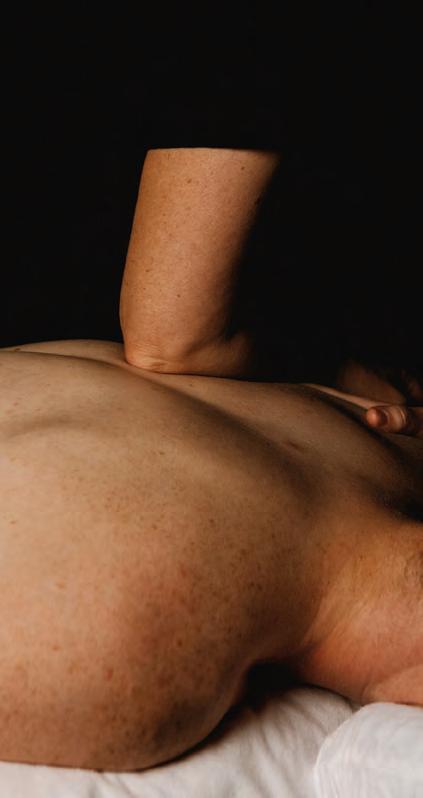






Everyone had a job. The men and boys drove the boats upriver to dip the nets in the river and seine. The women waited. Never wondering. There were always enough. The salmon that filled the boats when they returned weren’t huge — humpies aren’t — maybe a foot long. But they were plentiful and made for good drying.
My cousins and I played in the water. Swimming. Doing somersaults or handstands, holding our breath, eyes closed tight, our hands squishing in the mud on the slough side of the sandbar island our family called Eaton Station, in the Unalakleet River. Eaton Station: The best resort. We played badminton in the sand. Tanned on hand-sewn calico blankets laid on the beach. We ate Norton Sound red king crab, fatty grilled king salmon, and, if we were lucky, Mom or an auntie. It seemed like the sun was always shining. And it probably was. Climate change wasn’t a part of our daily vocabulary, and persistent summer rains and winds weren’t a thing back then. July was for sun and salmon.
BY

Once the boats returned, slow and heavy, the women gathered at the fishcutting tables. My favorite part. They said funny things when they were working. They always knew the answer to everything. They always seemed to be smiling and laughing. The cumulus clouds above us, like whipped cream on grandma’s white cake with a sprinkle of fresh tart blueberries, laughed with them. My belly, my cheeks, my jaw, the oil and juice making up my eyeballs relaxed. Safe. So safe.
Life flowed easy.
My first job at the cutting table, when I was maybe 7 or 8, was to clean the slime and blood off the fish my aunties and Mom cut for drying. Three fish in each hand, I’d wade out on the river side of the island, the sun so hot it didn’t matter that the water was cold. I’d go past my knees, far enough to ensure that the fillets, attached by the tail, wouldn’t touch the river bottom and stayed free of any sand. I swished the orange flesh in the sparkling, fresh, clear water. The gulls, those greedy cousins, flying and squawking for any piece of flesh or eggs. Or milt — now and then I’d toss a piece of the white sac from a male, just to see it disappear whole, the gull’s head tilted to the sky.
Once the boats returned, slow and heavy, the women gathered at the fish-cutting tables. My favorite part.
One day, Mom handed me her ulu at the fish-cutting table. It was a graduation. A commencement. I was on to bigger things, the handover said. I was ready to learn the real craft. With real technique. With her favorite tool. I didn’t realize that from that point on, I’d stand at the table with Mom and my aunties and learn the secrets of the world when the boats came back.

Allfreshlypaintedandfurnishedfor2025! 3bedroom 3bath,spaciousendunitwith themostamazingviewsofWhistler Blackcombfromyourprivatehottub. ElegantandUnderstated1/4share.Themost innovativewaytoownrecreationalrealestate


With guidance from Mom, I cut my first humpie, a small female. I sliced down the belly, pushing harder than I anticipated. Then down the back. A few other cuts, and the fillets were attached at the tail, ready for the tirraqs, or angled slices, that ensure bitesized bits in winter. When I was done, the heart was still attached. The purple morsel hung from the collar at the bottom of the fillet. I didn’t know that leaving the heart attached to dry was considered a skill. I hadn’t meant
“Wow, Paniuq!” Papa Ralph said, his voice ebullient, like cold Tang. “The heart still on there!
Papa handed me my diploma with those words. Words warmed by the love and pride in his inflection, feelings that also flowed from his eyes and heart that day at Eaton Station. Words I can return to any time, to feel grounded in I will do important work, he said
The pride seeped through my marrow. I waded out into the clean water of the river and swished the humpie, the cottonwoods and birches on the other side of the river practically clapping for me. I hung the cut fish on the drying rack made of cottonwood poles that my dad, brother and uncles put up every year.
I am important, he said to me. I will do important work, he said to me. I am doing good, he said to me
We no doubt ate uuraq that night for supper. Boiled pink salmon steaks and fish eggs with onions, potatoes, salt and pepper in a broth like no other. Mom would have put either kimchi or ketchup in hers. Dad, seal oil. If there was leftover uuraq in Mom’s stainless steel pot, blackened on the bottom from the fire, she tossed it into the river. White fish and grayling ate the pink meat and boiled eggs. We washed out our bowls at the river, using sand as dish soap for scrubbing.
My job of cutting fish returns, year after year. My favorite job. My favorite job because, thanks to my teachers, it is done with love and was born from love. Because we all work together, and together is the cornerstone of everything that gives meaning in life. My favorite job because cutting fish means I belong. To a family, to a community that shares, and in the process of doing, I remember I belong to a long line of ancestors who made cuts just like the ones my mom showed me. It’s more than just food for the winter. Salmon remind me that I am important and loved.
Lifeways is a column in which an Inuit woman explores living in direct relationship with the land, water and plant and animal relatives in Alaska.
This story was originally published at High Country News and is republished here by permission. n








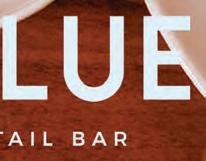












Resort MunicipalityofWhistler
Thepurpose oftheworkinggroupistoprovidestrategicadviceandguidance to staffonhow theRMOWcanuseit’sengagementactivities,andother interactionswiththepublic,toenhancecommunity connectionandtrust.
Ouraimis to innovate onourpractices to designinclusiveandaccessible engagementprocesses,measureoutcomesandsupport community resiliency in achangingworld.
We areseekingdiverse volunteersfromWhistlerandbeyondwith experience andprofessionalexpertise inoneormoreof:
•communityengagement,communitybuilding,andprocess design/facilitation,
•communicationand/ormarketing,
•organizationalbehaviour,sociology,orbehavioural science,
•engagementorpublicparticipationprocesses,
•a deepunderstandingofcommunityissues,opinions, andneeds.
ApplybeforeFriday,October31.
ScantheQRc odeformoreinformation.


Resort MunicipalityofWhistler whistler.ca
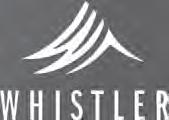

PursuanttoSection464(2)ofthe LocalGovernmentAct thisistoprovidenoticeofintentofthe Squamish-LillooetRegionalDistricttoamendtheElectoralArea CZoningBylawNo.765,2002,ina mannerconsistentwiththeElectoralArea COfficialCommunityPlanBylawNo.689,1999.
PublicnoticeisherebygiveninaccordancewithSection467ofthe LocalGovernmentAct regardingthe followingbylaw:
• Squamish-LillooetRegionalDistrictElectoralArea CZoningBylawNo.765,2002,Amendment BylawNo.1917-2025
PURPOSEOFBYLAW NO.1917-2025
BylawNo.1917-2025isfocusedontextamendmentstothebylawinordertoensurethatinformation scurrentandimprovetheabilityofuserstonavigatepermittedusesinthebylaw. Thelistbelow summarizeskeyamendments.Fora comprehensivelist,pleaseseethestaffreportandbylawonthe SLRDwebsiteorattheSLRDoffice.
• Revisingthedefinitionof bedandbreakfast toclarifythatthisuseisnotpermittedincarriagehomes
• Revisingthedefinitionof campingunit toclarifythatthisdoesnotincludeyurtsorcabins
• Addingprovisionsfor emergencyshelter useinmostzones
• Updatingnumberinginthebylaw
• RevisingtheexistingPonderosaEstateszonesothatitbetterreflectstheoriginalLandUseContract AstheproposedzoningamendmentisconsistentwiththeOfficialCommunityPlan,theSLRDmaywaive theholdingof apublichearingontheproposedbylaw.TheareacoveredbyBylawNo.1917-2025isthe entiretyofElectoralAreaC.
INFORMATION &SUBMISSIONS
Acopyoftheproposedbylawandrelevantbackgrounddocumentsmaybeinspectedatthe RegionalDistrictoffice,1350AsterStreet,Pemberton,BC,duringofficehours8:00amto4:00pmuntil October21,2025notincludingweekendsandstatutoryholidaysorontheSLRDwebsite. Writtensubmissions(mailoremail)mustbereceivedattheSLRDofficenolaterthan 4:00pm TuesdayOctober21,2025.
TheSLRDBoardwillbeconsideringfirstreadingofAmendmentBylaw1917-2025attheOctober22,2025 SLRDBoardmeeting.Allpersonswhobelievethattheirinterestinthepropertyisaffectedbythe proposedbylawshallbeafforded areasonableopportunitytopresentwrittensubmissionsrespecting matterscontainedinthebylaw.Writtensubmissionsmustbeaddressedto“SLRDBoardofDirectors,” andincludeyournameandcommunityofresidence.Until4:00pmonOctober21,2025,written submissionswillbereceivedatthefollowing:


TheWhistlerValleyHousingSocietyisseeking applicationsfornominationstotheBoardof Directors Termuntil2026AGM.
Interestedinpeoplewithlivedexperienceorskillsinthe followingareas:
•Finance
•ConstructionorHousingDevelopment
•BuildingMaintenance
TheWhistlerValleyHousingSocietyisanot-for-profit establishedin1983andistheownerofTheNesta30-unit rentalhousingprojectandWatsonCourta20-unitrental housingproject.OurtenantsareClientsofSocialService Agencies,EssentialServiceWorkersandotherWhistler Employees.
www.wvhousingsociety.com



ApplicationdeadlineisOctober5,2025 wvhs.info@gmail.com








BY DAVID SONG
WHEN MAGALIE LAROUCHE tells people that she began dirt biking in 2019, many of them are surprised.
At 33 years old, the Pembertonian is no spring chicken—not in athletic terms. She routinely races opponents who have trained for more than a decade, holding her own and then some.
The biggest feather in Larouche’s cap to date is a silver medal among pro women at Red Bull Outliers.
Taking place from Sept. 5 to 7, in Alberta’s Badlands near Drumheller, Outliers is a multi-day hard enduro competition that drew 320 athletes from Canada and the United States this year. Hard enduro features the most extreme components of other off-road motorbike disciplines: the obstacles of trials, the quick lines of motocross, cross-country’s navigational elements and the distance of traditional enduro.
Outliers is part of the U.S. Hard Enduro Series (USHE) and defined by a thrilling mass start, deep ravines, precipitous hills and unforgiving terrain. Larouche rose to the occasion, finishing as runner-up between victor Corey Ireton and OshiHampson in third.
“I’m over the moon,” said Larouche. “Moving up to the pro class, I wasn’t expecting to podium this season. I know I will have to work hard and progress to be able to podium again…but for now, I will sit on this trophy and look at it every day to motivate me. It’s in the living room. You can’t miss it.
“Outliers is a super gnarly race full of hill climbs that don’t look possible. You just have to look up, commit 110 per cent and somehow your bike makes it up…hopefully most of the time. The unique landscape of the Badlands with its crazy geological formations adds something special to this race. No one gets to ride this area unless you are racing [because] it is on private land. There’s no race like it.”

“I will sit on this trophy and look at it every day to motivate me.”
- MAGALIE LAROUCHE
Despite her lifelong penchant for physical activity, Larouche didn’t view herself as an athlete until recent times. She grew up as a young skier and gymnast near Lac Saint-Jean, Que. before giving snowboarding a try.
Larouche lost her mom, Annie Simard, at a young age and naturally gravitated towards her father Michel as an idol. The man was a competitive biker for much of his life and
“the coolest dad”, but unfortunately passed away from cancer in 2012. Shortly thereafter, Larouche moved out west to experience her first snowboard season.
She met her now-husband Jared Short in 2014 and wanted in on the fun when he began dirt biking five years later. COVID-19 ironically accelerated her entry into the sport by closing her employer, the Scandinave Spa, for a few months.
Larouche and Short used much of their

free time to ride, and in 2021 she got her first big bike: a KTM 200, far more powerful than the Yamaha TTR she cut her teeth on. In April 2022, Larouche signed up for the Big Kahuna (now the Mini Kahuna) in Kamloops, B.C. as an intermediate-class rider.
“It soon became an addiction and ever since that summer, my life has been circling around the dirt bike lifestyle,” she said. “The fire inside of me was lit and I was hooked on racing. The adrenaline you get from the start to the finish line, and the feeling you have [during] the following days was something I have never felt before.”
Changes in Short’s work arrangements meant he couldn’t ride as consistently, but Larouche met new friends through organizations like the Pemberton Dirt Bike Association (PDBA), Squamish Dirt Bike Association (SDBA) and Pacific North West Motorcycle Association (PNWMA). One of her role models, Katie Hall-Leah from Birken, is a two-time B.C. off-road titleholder and the incumbent USHE ladies’ champion.
Larouche has called Pemberton home for two years now, after a nine-year stint in Whistler. She operates her own registered massage therapy (RMT) practice and isn’t afraid to harbour ambitious goals.
“This year, I am planning on selling my snowmobile and skipping winter sports to focus 110 per cent on dirt bikes,” explained Larouche. “We are planning on making it down to the U.S. to participate in some hard enduro races. I will try to squeeze in as many local or provincial races as possible, and on the side to keep my business busy.
“The sport is really growing, and not just men: a lot of women are getting into it each year. Usually, everyone is really welcoming and generous with their time to help in any ways possible—it’s a tight community. If you ride in Pemberton or Squamish, get your membership. That’s what helps clubs to support us riders and organize more events, social rides, trail maintenance and more.”
Visit www.redbull.com/ca-en/events/redbull-outliers for more Outliers results. n

BY DAVID SONG
THE BUTTERFLY Support Network is a registered charity dedicated to helping British Columbians grappling with infertility, pregnancy loss or the death of an infant. One of its flagship events, the Butterfly Run, is expanding to Whistler after six years in Vancouver, three on Vancouver Island and two in Kelowna.
According to the World Health Organization (WHO), one in four pregnancies end in miscarriage while one in six couples are afflicted with infertility. These numbers don’t include people such as Whistler Butterfly Run organizer Carly Fox,whose firstborn daughter Violet tragically passed away in December 2013 at just one month of age.
Fox knows all too well that such a loss is excruciating, to say the least—but it can also be terribly lonely.
Many are not comfortable openly discussing the loss of a fetus or child. A few local organizations like Sea to Sky Hospice or Whistler Community Services Society (WCSS) provide bereavement support, but Fox asserts that more is needed.
“This is one of those things that doesn’t come up in conversation until it’s happened to you,” she said. “Being a rural community, we’re spread out and our resources are spread out. We don’t have fertility clinics or the sorts of things they have access to in Vancouver or in a bigger regional area. There’s kids everywhere, but that isn’t always a smooth journey.
“When people talk about their families… [loss and infertility] shouldn’t be a taboo thing. The idea is to bring some focus, awareness and compassion to the topic, and also bring in some additional resources.”
Whistler’s Butterfly Run is scheduled for Oct. 4. Participants will meet at Myrtle Philip Community School and go for either an approximate three-kilometre walk or five-kilometre run (both slightly lengthier than their counterparts at the Vancouver or Kelowna events). The anticipated route winds around the Valley Trail and Whistler Golf Club, and is not meant to be competitive.
Individuals of all ages and backgrounds are welcome, as are pets and strollers.
“I’m going to bring tissues. We’re going to hug, we’re all going to cry,” remarked Fox. “We just want people to feel that there’s an opportunity to connect, whether or not they’re planning a family, having challenges or even thinking about it. We’ve got families coming who have had losses nearly two decades ago. I’ve got some skin in the game, and unfortunately, multiple experiences since then. I feel like I’m supported by my community when I say it out loud—when I name my daughter.”
The Butterfly Network has already made tangible waves across British Columbia. Last

A
year’s Vancouver Run, for example, garnered 914 registrants and 86 volunteers who raised over $153,000. The Kelowna event generated $36,600 by way of 297 participants, while the Vancouver Island edition also managed significant numbers (329 runners and $35,550).
An impact report from the charity notes that these donations have gone towards facilitating 28 in-person support groups, 55 online groups, 38 peer-led community gatherings, 80 counselling sessions, 176 bereavement boxes and 182 emergency room care packs.
Since its 2019 inception, the Butterfly Network has fundraised north of $750,000 due to the generosity and vulnerability of more than 5,000 registrants. Fox hopes that Sea to Sky residents will begin to reap the benefits of such support as well.
“I’m in contact with some of the team at Sea to Sky Hospice who have already started some additional grief and loss counseling. We’ll continue to work together,” she said. “What we’re going to do is hopefully identify…where the gaps are and if they can be filled by creating another service or creating another program—or if the Butterfly Network can support an existing program with additional resources.”
In October 2024, a handful of locals including Fox and a woman struggling with the full-term death of a fetus, registered for the Vancouver Butterfly Run and did it virtually by going for a walk around Lost Lake. As of this writing, 48 individuals have signed up for the inaugural Whistler Run: exceeding expectations.
All are welcome to join, but none are pressured.
“Sometimes it’s hard to get out of bed,” Fox remarked. “It’s hard to open the door, it’s hard to put one foot in front of the other. Wherever anyone is on their journey, we just want them to know that we’ll support them where they’re at.”
Visit raceroster.com/events/2025/106253/ butterfly-run-whistler-2025 to register for or donate to the Whistler Butterfly Run. n

CoachedSwimSessionsatMeadowParkSportsCentre When:Oct3–Dec19Mondays&Fridaysat 6:15am-7:15am Price:$220(entireblock)
CoachedIndoorSpinSessionsatMeadowPark SportsCentre When:Oct1–May13 Wednesdaysat6:05am-7:15am Price:$300(entireblock)
EntryintoMPSCincludedintrainingsessionprice.No trainingsessionsonholidays.Alllevelsofabilitiesare welcometoparticipate.
To jointhesetrainingsessions,participantsmusthaveaWhistler Triathlon Club(WTC)Membership. Availableonlineatwww.whistlertriathlonclub.com Pleaseemail:treasurer@whistlertriathlonclub.comtosecureyourtraining andyourWTCMembership.
ContactCatherinetodaytobook yourcombinedprintand digitaladforWinter/Spring2026.
604-932-1672 cpower@whistlermagazine.com

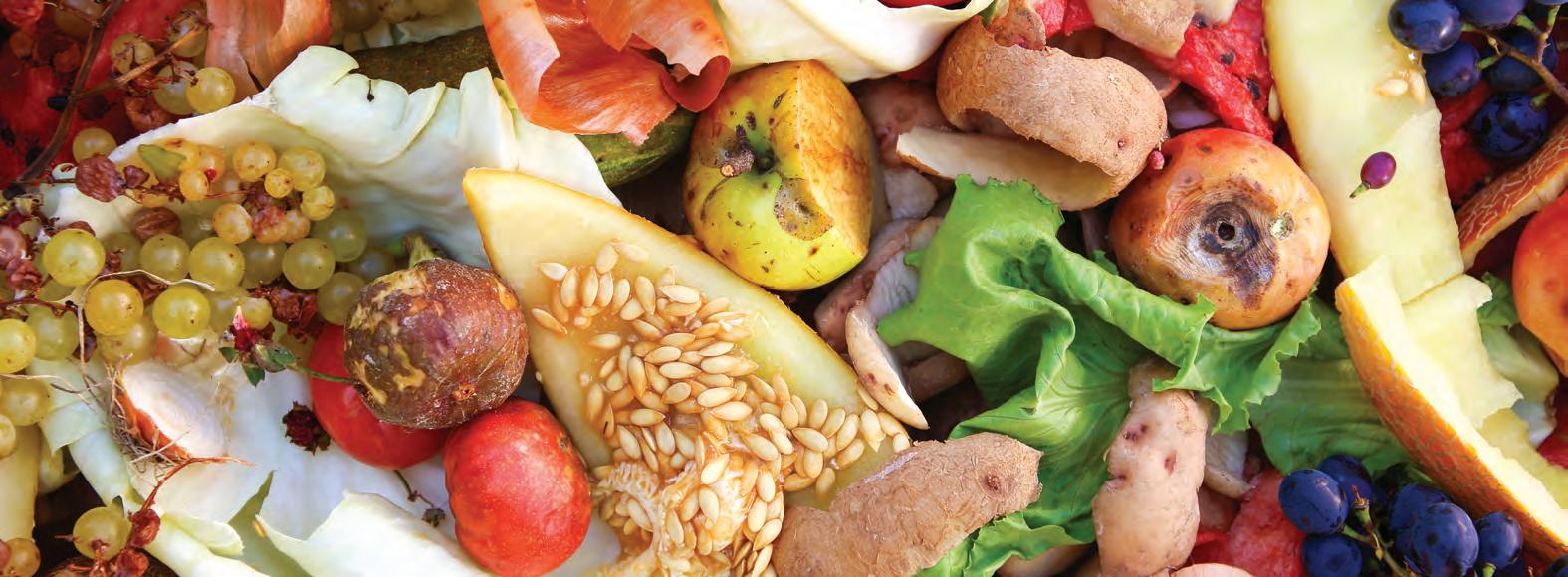
THE LANDFILL where most of Toronto’s garbage goes is filling up fast. And if you head south on Highway 99 till you hit Delta, you’ll see Metro Vancouver’s main landfill to the east of the highway. Started in the ’60s, it’s now grown so big that in certain light it looms like some kind of eerie, sci-fi blob over the roadside treetops.
To Metro Van’s credit, they’ve planted grass on its flanks to lessen erosion and help it blend in, though I doubt you’ll see another
Fast forward to today, and our world population has doubled. We’ve now got about 8.2 billion people on Earth, with more than 100,000 added each day. All of us eating, eating, eating. Buying stuff, and more stuff. Then dumping all the waste and trash left over somewhere.
The latest results should be ready by midNovember, so stand by.

BY GLENDA BARTOSH
brooding monster like it on a river delta anywhere. At least not on this planet.
While Whistler’s waste doesn’t go to Delta, it has to go somewhere and that’s the Campbell Hill landfill in Cache Creek, which looms equally large and ominously along Highway 97. Some of Metro Vancouver’s waste also goes there.
The thing about these humungous mountains of garbage is the biggest proportion is food waste — and much of that is avoidable.
September 6 marked Whistler’s 50th birthday, and when the RMOW was incorporated in 1975 the world’s population was about 4.1 billion. That’s according to the World Population Clock, an excellent tool used by the likes of researchers and policy makers that incorporates UN data and more.
As for little ol’ Whistler, in 1995 Pique reported there was a paltry 600 permanent residents the year the resort was founded. (That was the official census number, but lord knows how many squatters and hipsters living out in the middle of nowhere “forgot” to fill in their census forms.) For some perspective, you could pretty much book all of Whistler’s residents in 1975 into the Fairmont Chateau today, with only one guest per room.
By ’95, Whistler’s population had increased 10-fold. Today, it hovers around 15,000-16,000 people — take your pick since the last census was done in 2021, which
I could write a scathing book or three on the ridiculous amount of needless waste we humans make. But food waste really strikes me — because, A., it’s precious and, B., every day we hear over and over how fed up people are with the high cost of living, mainly groceries.
So I’m zeroing in on food waste here, especially after a recent report by CBC’s Chad Pawson explaining how 22 percent of the waste dumped at Metro Vancouver’s landfill is green or compostable organic waste — the largest portion of all. That averages out to 70 kg. per person per year!
Wow! After hearing that, I had to touch base with the RMOW to see where Whistler stands. Sadly, it’s a similar story. One maybe even more troubling given the “green cloak” Whistler fancies wrapping itself in, although Vancouver still has its 2020 Greenest City Action Plan.
“The thing about these humungus mountains of garbage is the biggest proportion is food waste...”
- GLENDA BARTOSH
showed about 14,000. Either way, none of those figures include the thousands of seasonal workers, nor the 3 million visitors Whistler now hosts annually.
Think of it! All the waste we all create, with population numbers steadily increasing and no end in sight till maybe 2050, when most demographers figure the number of people on Earth will start to level off, then decline.
Meanwhile, what to do about our wastrel-y ways? Try not to generate it in the first place. But once we do, dispose of it wisely.
At muni hall ex-Piquer Brandon Barrett really helped out, confirming that, using the same method of calculation Metro Van does, Whistler has an almost identical footprint. Compostable organic waste, of which food waste is the biggest proportion, is also the No. 1 component, with an average of about 71 kg. per person generated annually.
Coincidentally, the RMOW did a waste audit in September, since that’s the only way to figure out the ratio of organics in the waste stream. Such audits are a snapshot in time, with the last ones done several years ago.
Meanwhile, Barrett pointed out that landfilled food waste includes both unavoidable food waste, like eggshells and banana peels, and avoidable food waste. That’s stuff like spoiled produce or leftovers. You know, the slimy lettuce you forgot at the back of the fridge, or last week’s meatloaf you couldn’t be bothered to deal with so you just dumped it.
“The majority of food waste in our landfill waste stream is avoidable food waste, which should have been eaten rather than landfilled or composted,” he notes. Amen
I know, I know — we’re all super busy with life, but think about all that money you spend on precious food, and all the money that subsequently goes down the drain whenever you waste it. Besides, Whistler has a Solid Waste Bylaw requiring all businesses and residents to separate organics and recycling from their landfill waste, so you’ll save time and effort there, too.
I’ve mentioned this site before, and here ‘tis again: Love Food, Hate Waste is a great resource on how to reduce your food waste. In a nutshell (unavoidable food waste), here’s the deal:
1. Plan it out.
2. Use it up.
3. Keep it fresh.
Local businesses can also refer to this page on the municipal website, which has lots of great advice, including the guide “How to Achieve Zero Waste in Whistler Restaurants”. So whaddaya say, folks? Can we avoid avoidable food waste — which also cuts down on those nasty greenhouse gases — and enjoy more good eating at less cost?
Sounds like a great double serving to me.
Glenda Bartosh is an award-winning journalist who learned when she was a kid how not to waste stuff — and why it’s such a good idea. n






WORK WILL BE INCLUDED IN ‘FROM SEA TO SKY’, AN AUDAIN MUSEUM EXHIBIT OPENING NOV. 13
BY DAVID SONG
THIS YEAR’S recipient of the Audain Prize for the Visual Arts and its associated $100,000 prize is Brian Jungen, who was recognized on Sept. 26 at a ceremony in the Fairmont Hotel Vancouver’s Pacific Ballroom.
Hailing from north of Fort St. John, B.C. Jungen is an Emily Carr College of Art and Design alum and a contemporary sculptor who now lives in Treaty 8 on traditional territory of the Dane-Zaa First Nation. His career took off between 1998 and 2005 when he created “Prototypes for New Understanding”: a series of sculptures made of Nike Air Jordan sneakers arranged to resemble Northwest Coast Indigenous art. Jungen’s content has been featured solo at locations like the New Museum in New York, Vancouver Art Gallery, London’s Tate Modern, Art Gallery of Ontario, the Hammer Museum in Los Angeles and Prospect New Orleans.
“Brian Jungen has been among Canada’s most important conceptual-based artists for over 25 years, and his unique sculptural creations offer fascinating juxtapositions of materials and form,” says Audain Museum director and chief curator Dr. Curtis Collins. “The Audain Prize celebrates B.C.’s most influential and enduring artists, and Jungen’s ongoing commitment to challenging traditional notions of artistic production makes him a worthy recipient of this prestigious award.”
The Prize was established in 2004 by Michael Audain and represents his vision for furthering national and global appreciation for Canadian art. Since then it has been awarded to numerous standout talents including James Hart, Susan Point, E.J. Hughes, Rebecca Belmore, Fred Herzog and Takao Tanabe, just to name a few.
In 2025, the Prize winner was selected by an independent jury consisting of Kiriko Watanabe (Gail & Stephen A. Jarislowsky curator at the Audain Museum), Dr. Kimberly Phillips (Marianne and Edward Gibson Art Museum director at Simon Fraser University),




Reid Shier (executive director of the Polygon Gallery), Emmy Lee Wall (Capture Photography Festival chief curator) and Ian Wallace (2022 Prize recipient).
“The Audain Prize underlines the vitality of B.C.’s contemporary art scene while raising national awareness with regard to the importance of cultural sector endeavours,” Collins remarks. “As the facilitator of this award, the Audain Art Museum is proud to be part of one of Canada’s most valuable artistic prizes, and it parallels our mission to celebrate the finest art of B.C.
“Additionally, a selection of Jungen’s work will be included in a permanent collectionbased exhibition at the Museum entitled From Sea to Sky that opens to the public [on Nov. 13].»
While Jungen has resided in prolific cities like Vancouver, New York and Montreal, he maintains a strong connection with his Indigenous heritage. His mother was part of the Dane-zaa Nation, while his father originated
from Switzerland.
Jungen often looks to his background and personal knowledge of First Nations visual language while sculpting. A press release notes that his multidisciplinary practice is centered on “the decontextualization and transformation of mass-produced objects and popular culture, including Nike Air Jordan sneakers, plastic furniture and household items.” Often Jungen strives to maintain the physical integrity of his source materials so they are recognizable, provoking thought about the social constructs behind them.
The Dane-zaa artist explores themes of cultural identity, appropriation and survival in a globalized world, encouraging dialogue about how Indigenous and non-Indigenous cultures relate to one another.
“I am grateful for all the exposure that I’ve had over the years, and to the people who have helped me along the way,” says Jungen in a release. “Being honoured as the recipient of this year’s Audain Prize extends beyond acknowledging my accomplishments as an artist. The Audain Prize serves as another bridge between my sculptures and members of the public, sharing my work with new audiences and communities, across generations and throughout the globe.”
Michael Audain, chairman of the Audain Foundation, told reporters: “It is an honour to recognize Brian Jungen with the 2025 Audain Prize. The impact of his art is undeniable. Since the late [1990s], Jungen has forged a name for himself internationally through his commanding sculptural practice. It is critical that we not only acknowledge the calibre of such accomplished artists but also continue to raise their profile here in British Columbia, in Canada, and around the world.”
Five $7,500 Travel Awards were also doled out at the Prize ceremony. Winners include Emily Carr University of Art + Design student Naimah-Bint Amin, University of British Columbia attendee Violet Johnson, Edith Skeard from the University of Victoria, Simon Fraser University’s Alexis Chivirter Tsegba and the University of British Columbia Okanagan’s Jesse Weemering. n



It is nota requir ed part of theBCcur riculum. It is nothelpful to students , teachers ,orpar ents . It is making ex is ting inequities worse.
It wastes valuablelear ning time andr esources

BY KATE HESKETT
GROWING UP ON A BEND in the river, Ophelia Blue Rivers is lonely. She spends her days playing with frogs and dreams of being lifted into the air and carried away by butterflies. To where, she doesn’t know. Abandoned by her parents, Ophelia is raised by her Grandma Blue on a “Cherokee reservation that [is] no longer a reservation.” The descendant of Black Freedmen, and once married to a Cherokee chief, Grandma Blue has chosen to isolate her granddaughter in an attempt to protect her from a segment of viciously racist “true Cherokees” in town. But when chemical runoff poisons the river they depend on, Ophelia must leave her gruff but loving Grandma and discover what it truly means to be “half Black, half Cherokee, and all mixed up.”
Antonio Michael Downing’s debut novel Black Cherokee follows Ophelia’s search for belonging through four acts. In the first act, Ophelia is seven years old, growing up outside the fictional town of Etsi, in South Carolina. She dreams of attending the Cherokee school with the other kids her age, but her Grandma refuses to let her go. Estranged from her own children, including Ophelia’s father, Grandma tells her, “I’ve sent three children to that school, and none of them came back unharmed.” Sure enough, when Grandma Blue gives in and Ophelia does go to school, the children immediately reject her because she looks different—and because they are told to exclude her by their relatives, who are still mourning the loss of their culture and are protective of what remains. After her first day at school, Ophelia comes home bruised and scraped, because a girl at school, “punched me and called me a nigger and a pretend Cherokee.” Ophelia’s father appears soon after to remove her from her Grandma’s care, and Grandma Blue is forced to relive the trauma of having lost her own children to the experience of being mixed-blood in a Cherokee school.
In Act Two, Ophelia is sent to the big city of Stone River to live with her alcoholic and disinterested Auntie. Now a twelve-year-old at a Black school, she falls in with a Black evangelical church group, only to discover that in this new world she is deemed not Black enough. In Act Three, for her final year of high school, Ophelia attends a prodigious white school as part of a program designed by her successful auntie, Madame Belle, to “prove that if given the same teachers, the same support, the same opportunity, gifted black students like her could outperform white students. Not “do just as well,” but consistently beat them. This became her crusade.”
Madame Belle is the one who got away, “Etsi’s Cherokee arm was never long enough to reach her.” At fourteen she received a scholarship to attend summer school in Paris, adopting all the haute couture, but eventually realizes that as a poor woman in France, “she would never escape her birth. To nobodies. In America class was not a birthright, it was a commodity she could buy.” For Ophelia, her
dalliance with being a Black girl in a white world proves not too dissimilar to being a Cherokee kid in a Black school, or a Black kid living on Cherokee land. In all places she is cast out. In Act Four, at nineteen, Ophelia is finally old enough to make her own plans for her future and has an important decision to make.
But it’s a decision devoid of viable options. Just as Shakespeare’s Ophelia suffers the consequences of the actions of others, Ophelia Blue Rivers has minimal control over her circumstances. A thought experiment into the overlap of what he considers North America’s two original sins, Black enslavement and Indigenous genocide, Downing’s Black Cherokee is a very human tale of a young girl yearning to belong. He writes:
“If casting out our Ophelias wounds us, we can only become whole by restoring them. By making space for the possibility of transcendence. Of being both. Of being beyond both.”
“A thought experiment into ...North america’s two original sins...”
- KATE HESKETT
By taking us on Ophelia’s heartbreaking search for acceptance, yet providing no such place, Downing creates in the reader a call to action.
“What happens to us when we cast out members of our society because they are different? Do we not wound ourselves? And most urgently: How do we heal?”
Antonio Michael Downing is a Trinidadborn, Canada-based writer, musician, and creative force. Named one of Canada’s best emerging authors by the 2018 RBC Taylor Prize, his acclaimed memoir Saga Boy was called “the triumph of Blackness everywhere” by Giller Prize winner Ian Williams. The book was nominated for both the Toronto Book Award and the Speaker’s Book Award in 2021. His debut novel Black Cherokee is published by Simon & Schuster.
kate heskett is an award-winning poet, writer and canoe guide. Their work has appeared in Pique and The Lupine Review, and the upcoming anthology Pillow Talk features their personal story of identity and acceptance. They are forever working on their first novel.
Michael Antonio Downing will be in conversation with moderator Rachel Bergquist at the Sunday BookTalk and Breakfast at the Whistler Writers Festival on November 2nd. He will be joined by authors Evelyn Lau and Sarah Leavitt. Tickets available at https:// whistlerwritersfest.com/ n





















OCTOBER 10, 2025 T SHOWS: 6:00 PM & 8:00 PM
ComedypowerhousesPeterOldringandPatKelly(CBCRadio’s This isThat)reunitewithCarolynTaylor(BaronessVonSketchandI HaveNothing)todeliver adelightfullyabsurdandwildly entertainingvarietycomedyshow.
TICKET SART SWHISTLER.COM/LIVE
Effective October1,2025
Fare products sold in the Whistler Transit System willhave updated prices and policychanges:
DayPASSwill replace Transfers and willcapfares daily after a second trip Thismeansyou’ll neverpaymore thanthevalueof a DayPASSin a single transitday.
Products purchased before October 1 willcontinue tobeaccepteduntil used up.
Forfullpriceandnew product details, visit bctransit.com/Whistler.
ESTABLISHMENTLOCATION:4010WhistlerWay
LICENSETYPE:LiquorPrimary
APPLICANT:WhistlerConferenceCentre
TheWhistlerConferenceCentreisa LiquorPrimarylicensed establishmentwithhoursofservicefrom11:30amto1:30am MondaythroughSaturdayand 11:00amto1:00amSunday. ThelicenseehasappliedtotheLiquorControlandLicensing Branchtopermanentlychangetheexisting255seatRainbow Theatrefromanunlicensedtheatreto afullylicensedtheatre.
Residentsandownersofbusinessesmaycommentbywriting to:
PlanningDepartment
ResortMunicipalityofWhistler 4325BlackcombWay Whistler,BCV8E0X5 planning@whistler.ca 604-935-8170
PETITIONSWILLNOTBECONSIDERED.
To ensuretheconsiderationofyourviews,yourwritten commentsmustbereceivedonorbeforeNovember3rd,2025. Yourname(s)andresidenceaddress(orbusinessaddressif applicable)mustbeincluded.Pleasenotethatyourcomments maybemadeavailabletotheapplicantandlocalgovernment officialsasrequiredtoadministerthelicenseprocess.

Here’s a quick look at some events happening in Whistler this week and beyond. FIND MORE LOCAL EVENT LISTINGS (and submit your own for free!) at piquenewsmagazine.com/local-events

The 2025 Whistler Excellence Awards, presented by BlueShore Financial (a division of Beem Credit Union), celebrate the people and businesses that make Whistler exceptional. Hosted by the Whistler Chamber in partnership with Whistler Community Foundation, Arts Whistler, and AWARE, the event honours excellence in service, innovation, sustainability, leadership, arts, business, and community impact.
> Oct. 3, 5 p.m.
> Fairmont Chateau Whistler
Kick off your weekend right at the Mallard Lounge’s famous Fairmont Fridays with boot stomping live music, refreshing cocktails and delectable shared plates. Each week features a different handcrafted cocktail for you to discover.
> Oct. 3, 5 p.m.
> Mallard Lounge
The Whistler Wine Walk is back this fall with guided walking tours of Whistler’s bustling art gallery scene. Experience Whistler’s galleries in a fun and unique way, with local, regional and international artists. Enjoy a variety of interactive art experiences while sipping on BC wine at each stop. Get your tickets to this yearly sell-out experience now!
> Oct. 3, 6 p.m.
> Various locations



> Oct. 3 to 13
> Various locations
Welcome to Whistler’s eerie Halloween pop-up experience! Step inside if you dare and immerse yourself in all things spooky - decked-out windows, haunting lighting and Halloween décor galore. Sip on wickedly-styled cocktails served in themed glassware. If you loved The Raven Room’s Miracle Christmas pop-up, just wait until you see what has been conjured up for Halloween. Save the date, more information to come!
> Oct. 3 to Nov. 3
> Raven Room
Participate or cheer on athletes at this fun, athletic event that is open to everyone, with distances ranging from 10 KM to 50 KM. From first-time relay participants to experienced ultra-marathoners, there’s something for runners of all abilities, with both competitive and recreational categories. The course is centered around Whistler Olympic Plaza and Whistler’s incredible Lost Lake trails.
> Oct. 4
> Valley Trail
Join the Whistler Naturalists for a walk to Rainbow Park. Open to anyone interested in learning about birds and contributing as a citizen scientist. Connect with experienced birders who are happy to share their knowledge. More information at whistlernaturalists. ca/birding.
> Oct. 4, 9 a.m.
To kick off the Thanksgiving long weekend, Whistler Blackcomb prepares you for the winter season with their legendary Turkey Sale. Take advantage of great deals on a large selection of last season’s winter gear. Remember to continue your shopping high throughout the Village, as many local retailers and businesses prepare for the winter turnover with deep discounts on a variety of items saving you up to 60%!
> Bottom of Lorimer Road


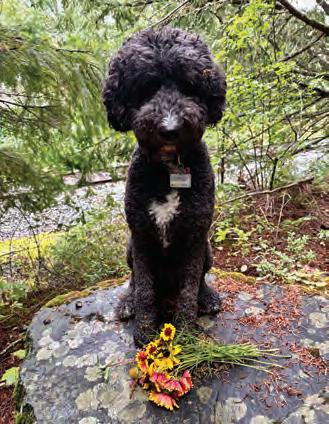
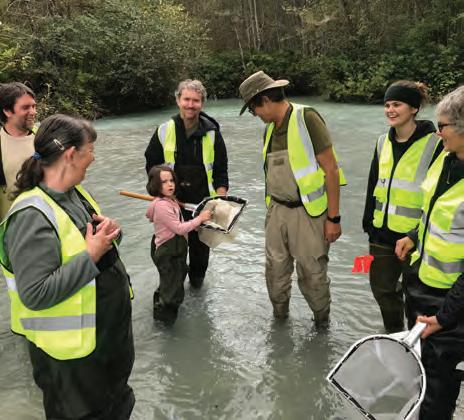
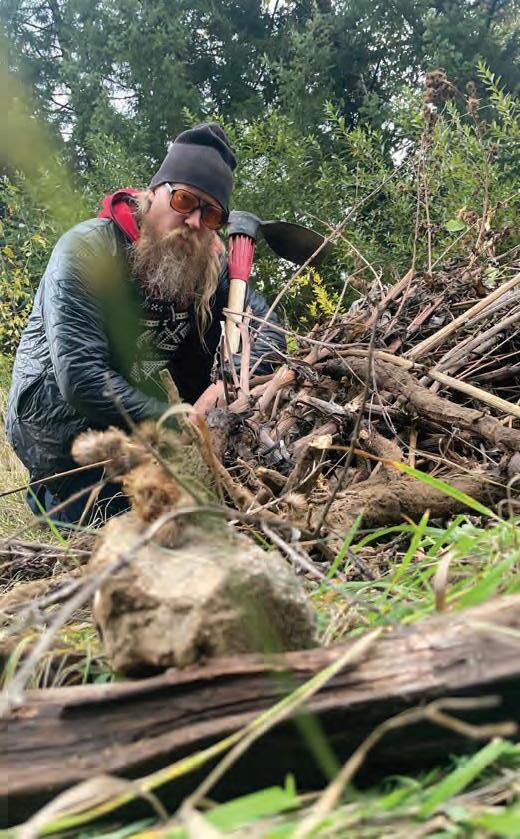

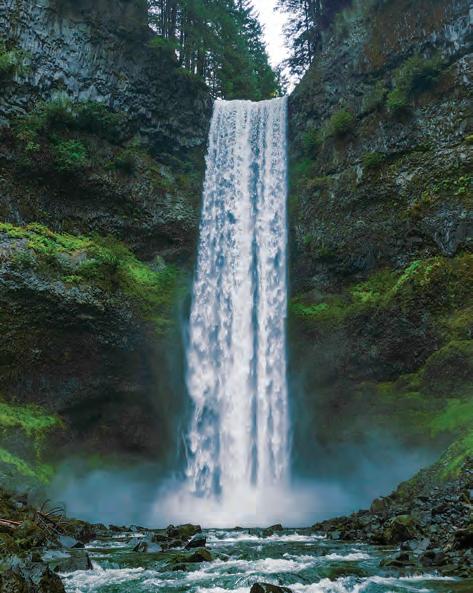





BY ALLYN PRINGLE
WHEN WHISTLER MOUNTAIN opened for skiing in the winter of 1965/66, it wasn’t known for its on-mountain amenities. Even after the Roundhouse was built in the summer of 1966, the only facilities on the top of the mountain were nearby outhouses.
The maintenance of these outhouses fell under the purview of Whistler Mountain’s paid ski patrol. John Hetherington, who joined the patrol in the 1967/68 season, remembered shoveling out and cleaning the outhouses as an “ugly job.” According to fellow patroller Hugh Smythe, Hugh gained quite a lot of experience cleaning and restocking the facilities in his first year on the patrol, often using rescue equipment such as ice axes. He described these duties as “the glamour of being a ski patroller.”
One of the first major renovations of the Roundhouse involved digging out and enclosing a lower floor which would include indoor washrooms. According to Garibaldi’s Whistler News, this was done in part due to skier demands. Doing so presented a couple of problems as at the time, the Roundhouse did not have water and some high points of rock beneath the Roundhouse made the space more a crawlspace than another level.
The first problem was solved by hiring a
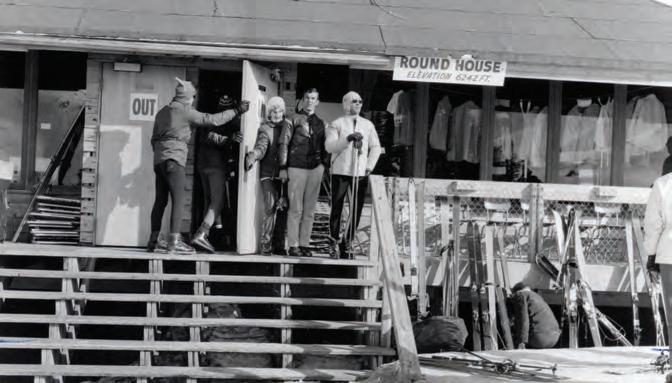
professional water dowser from Vancouver Island. He arrived with a willow stick and was able to find running water near enough to the Roundhouse that the lift company was able to install a pump and have enough water for the newly installed kitchen and for washrooms. The second problem involved removing some of the rock that the Roundhouse was built on.
Smythe had a blasting ticket because of his patrol work doing avalanche control but, as he recalled, “no experience blasting rock.”
ARIES (March 21-April 19): In Zen Buddhism, satoris are sudden flashes of illumination that are fun and clarifying. I’m happy to tell you that you’re in a phase when these sweet breakthroughs are extra likely to visit you. They may barge in while you’re washing dishes, in the grocery store check-out line, or during your fantasies before sleep. Be on high alert for intimations from the Great Mystery. PS: Some satoris could be gems you already half-knew.
TAURUS (April 20-May 20): You are eligible to be named “The Most Brilliant and Effective Complainer” for October. If you want to secure this prestigious award, spend time organizing plans for changing what’s amiss or awry. Decide which irritating off-kilter situations are most worthy of your thoughtful attention. Figure out how to express your critiques in ways that will engage the constructive help of others. And then implement a detailed strategy to compassionately achieve the intriguing transformations.
GEMINI (May 21-June 20): On certain medieval maps, an island paradise known as Hy-Brasil had a fuzzy presence west of Ireland. Did it truly exist? If so, it was said to be a blessed land that could restore lost youth and offer extravagant happiness. The place was thought to be rarely visible, and only under certain magical or auspicious conditions. I suspect you Geminis are within range of an experience like this. It won’t appear in a specific location but as a state of mind that settles over you. Don’t chase it. Allow it to find you.
CANCER (June 21-July 22): A stalactite is a stony formation that hangs like an icicle from the ceiling of a cave. It forms over long periods as mineral-rich water drips down and incrementally deposits hard calcium carbonate through precipitation. This marvel is an example of earth’s creativity at its most leisurely. A four-inch-long stalactite might take a thousand years to make. With that as your seed thought, Cancerian, I invite you to attune yourself to the slowest, deepest, most ancient parts of your soul.
Important developments are unfolding there. A wound that’s ripening into wisdom? A mysterious yearning that’s finally speaking in your native tongue? Be patient and vigilant with it. Don’t demand clarity all at once. Your transformation is tectonic, not flashy. Your assignment is to listen and be receptive.
LEO (July 23-Aug. 22): When bilingual speakers engage in the behavior known as “code-switching,” they may begin a sentence in one language and finish it in another. Or they may move back and forth between two different languages as they deliver a discourse. Why do they do it? To enrich their meaning, to dazzle their audience, to play and experiment. In a larger sense, we could say that codeswitching happens anytime we swivel between different styles of presenting ourselves: from formal to casual, serious to humorous, cheerful to skeptical. I bring this up, Leo, because you are in the heart of the code-switching season. Have fun!
VIRGO (Aug. 23-Sept. 22): In the Arctic, polar bears move through the world not by sight alone, but through scent trails that stretch miles across the ice. Their sense of direction is olfactory, intuitive, and primal. If I’m reading the omens correctly, Virgo, your navigation system will also be more animal than logical in the coming weeks. I advise you to trust subtle cues—like goosebumps, a sweet or sour taste in your mouth, or an uncanny pull toward or away from things. Your rational mind might not be fully helpful, but your body will know the way. Sniff the trail.
Access your instincts.
LIBRA (Sept. 23-Oct. 22): In ancient Egyptian myth, the goddess Maat ruled truth, divine law, harmony, and moral order. After death, each person’s heart was weighed against Maat’s feather of truth on a scale in the Hall of Judgment. If the heart, which embodied the essence of a person’s actions in life, was equal in weight to the feather, the deceased was assessed as virtuous and cleared to
He drilled some holes and covered the area in sheets of plywood, then added explosives. Luckily, only one piece of rock went through the main floor of the Roundhouse, though others were embedded in the ceiling. Once the debris was cleared out, washrooms and additional seating were added to the space. While the addition of indoor washrooms was a big step for Whistler Mountain, the lift company continued to experience washroom woes. The Roundhouse now had four stalls in the women’s washroom, two stalls and two
BREZSNY
continue to the glorious afterlife. If it was heavier . . . well, I’ll spare you the details. Maat’s scales were not symbols of punishment, but of fairness and justice. That’s also your special power right now, Libra. You have subtle insight into every choice. You understand that your wisdom is best used to bless, not censure. My hope is that you will foster gentle clarity and offer forgiveness to all, including yourself. Lay down the old guilt! Let grace be the law!
SCORPIO (Oct. 23-Nov. 21): The I Ching is an ancient divinatory book compiled in China over 2,500 years ago, Amazingly, it’s still quite useful. In accordance with astrological omens, I call your attention to one of its oracles: “Work on What Has Been Spoiled.” It tenderly counsels us to be brave as we repair what’s broken. But it’s crucial that we make the correction with patient grace, not blame and anger. The good news, Scorpio, is that you now have an uncanny ability to discern what’s out of tune, what’s crooked, what has been wrongfully abandoned. I hope you will offer your genius for re-weaving. A frayed friendship? A neglected dream? A forgotten promise? You can play the role of restorer: not to make things as they were, but to render them better than they’ve ever been.
SAGITTARIUS (Nov. 22-Dec. 21): In ancient Egypt, the lion-headed goddess Sekhmet wielded both intense heat and nourishing warmth. She had the power to destroy and heal. When outbreaks of chaos threatened, she incinerated them. Once order and balance returned, she served as a physician. I dare you to summon your inner Sekhmet, Sagittarius. Give your bold attention to an obstacle that needs to be crushed or an injustice that needs to be erased. If necessary, invoke sacred rage on behalf of sacred order. But remember that the goal is not merely combustion. It’s transmutation. Once the fire has cleared the way, unleash your gorgeous cure.
CAPRICORN (Dec. 22-Jan. 19): In Nepal, there’s a tradition among Sherpa mountaineers. Before ascending
urinals in the men’s washroom, and the preexisting outhouses. The facilities, however, were still not sufficient for the number of skiers on the mountain on a busy day and Smythe recalled that the lineups for the women’s washroom would be “horrendous.”
At one point, season pass holders signed a petition for additional women’s washroom facilities, as the women had gotten tired of waiting in the line and the rest of their group had gotten tired of waiting for them, sometimes for over half an hour. Mirrors were moved from the washroom to the hallway to discourage any lingering, clips were installed to keep the sleeves of onepiece ski suits off the ground, and there were even staff stationed at the washrooms with stopwatches. None of these measures were particularly effective and Smythe remembered some skiers, tired of waiting in line, decided to “just storm the men’s.”
In 1979, a new building was installed beside the Roundhouse that included extra washrooms, a new ski school office, a ski repair shop, and a sewer plant. When the Roundhouse Lodge was completely rebuilt in 1998, the new building boasted much larger washroom facilities than the original structure. His experiences with both the outhouses and the Roundhouse facilities left a lasting impression on Hugh Smythe that would inform future developments in his career. n
Mt. Everest, they perform a ceremony led by a Buddhist monk or Lama. It’s a way to honor the sacredness of the mountain, ask for grace during their climb, and return from the journey in good health. As you eye the peak ahead of you, Capricorn, consider making similar preparation. Ritualize your intention. Direct it with clarity and care. Bless your journey before you surge forward.
AQUARIUS (Jan. 20-Feb. 18): When people call something “glamorous,” they usually mean it has an elegant, captivating style. Its beauty is sophisticated and luxurious. But the original meaning of “glamour” was different. It referred to a deceptive magical enchantment designed to disguise the truth, whipped up by a conjurer or supernatural being. That’s the sense I want to invoke now, Aquarius. You have been seeing through the glamour lately—of the media, of consensus reality, of false stories. Now it’s time to go even further: to actively tear down illusions and dismantle pretense, preferably with tact. When you see through the spell, don’t just call it out— transmute it into clarity.
PISCES (Feb. 19-March 20): Pisces-born Nina Simone (1933–2003) started playing piano when she was three years old. At age 12, her debut concert was a classical recital. She developed a yearning to become the first Black female classical concert pianist. But her dream collapsed when the prestigious Curtis Institute of Music refused to let her study there. Then came the plot twist. She redirected her disappointment ingeniously, launching a brilliant career as a singer, composer, and pianist that won her global fame. The rebuff from the Curtis Institute was ultimately a stroke of good luck! It became a catalyst for her greatness. In accordance with astrological omens, I invite you to designate a frustration that you will use to fuel future success.
Homework: Make sweet amends to yourself for an error you made. Newsletter.FreeWillAstrology.comw






EmployeeHealth&WellnessPlanavailable
HEAVYEQUIPMENTOPERATOR– Minimum 5yearsor5,000hoursoperatingexperience onexcavator. Full-time,Monday –Friday.$33-$46perhour.
CRUSHING &EARTHWORKSMANAGER– Musthaveexperiencewithmobilecrushingplantandheavy civilconstruction.$33-$46perhour.
CONSTRUCTIONLABOURER– Greatopportunitytolear non-the-job.Staminaforphysically demandingworkandperseverancetobraveinclementweather required. Previousexperiencepreferredbutnot required. Trainingprovided.$28-$33perhour.
PIPELAYER –Minimum 5yearsexperienceincivilconstruction. Full-time,Monday –Friday.$33-$43perhour.
TRUCKDRIVER –BCDLClass 1orClass 3withairbrakesrequired.Manualtransmission. 2yearsexperiencepreferred.$35-$41.50perhour.
PROJECTMANAGER– Minimum10yearsexperiencepreferred.CivilEngineeringdegreeor CivilTechnologydiplomapreferred.FullTime,$90,000to$125,000peryeardependingon experienceandqualification.
PROJECTCOORDINATOR– Minimum2 yearsexperiencepreferred.$29-$40perhour.


Friday
I7:30-8:30a.m.StrengthinPlay–Anna
Saturday
I10:30-11:30a.m.Zumba–Susie Monday
F9-10a.m. Yin& Yang Yoga–Heidi Tuesday
I5:30-6:30a.m.TRXMixer–M-A Wednesday
F6:00-7:00p.m.SPIN–Courtney Thursday
F5:15-6:15p.m. Yoga:CoreFusion–Heidi





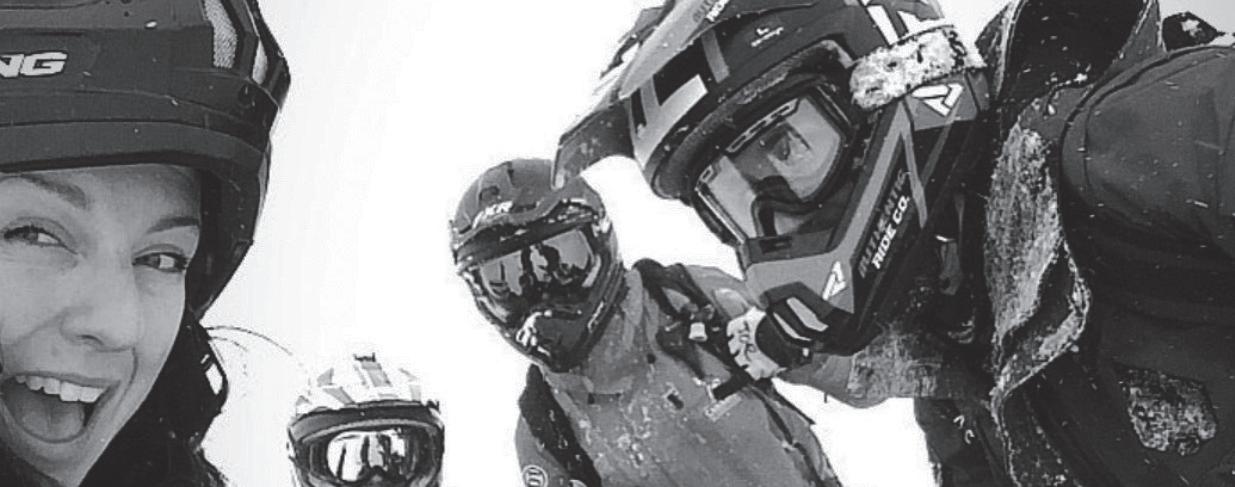
Visitcanadianwilderness.com/employment forfulljobdescriptionandhowtoapply.



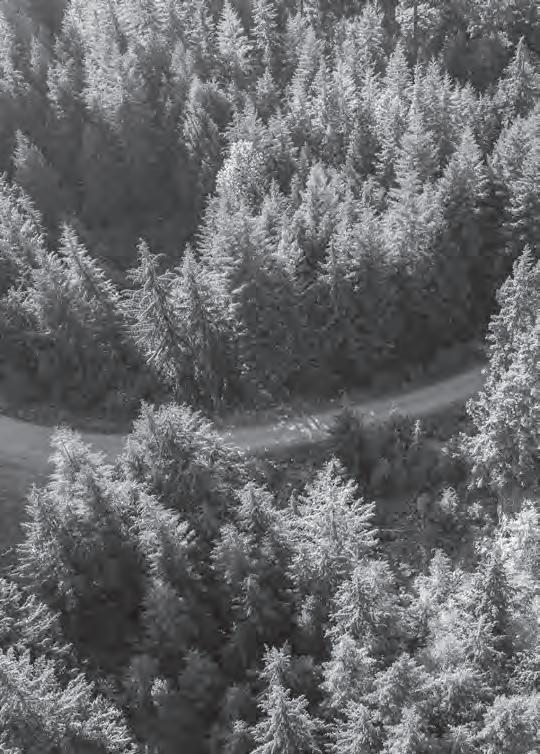

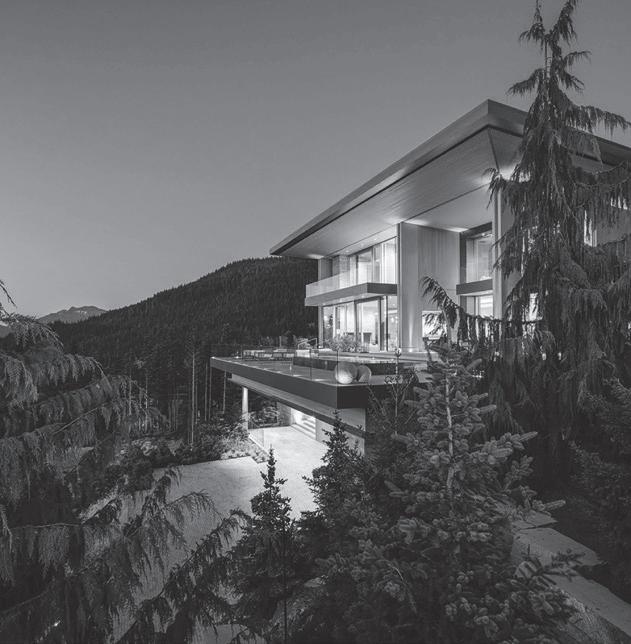
Ourteamofpeopleiswhatsetsusapartfromotherbuilders.Aswe continuetogrowasthe leader inluxury projectsinWhistler,ourteamneedsto expandwithus.
We are currentlyhiring:
Labourers ($20-$30hourly)
CarpentersHelpers/Apprentices1st to4th year ($25-$35hourly)
ExperiencedCarpenters ($30-$45hourly)
Carpentry Foremen ($40-$50hourly)
SiteSupervisor
Rates vary based onexperienceand qualifications.Red Sealis a bonus but not required Crane Operator experienceconsidered anasset.
EVR is committed tothe long-term retention and skillsdevelopment ofourteam We are passionateaboutinvestinginourteam’s future
WEOFFER:
• Top Wagesanda Positive WorkEnvironment
•FlexibleSchedule- WorkLife Balance (Wegetit,welove toskiandbike too.)
• Training& TuitionReimbursement(Needhelpgetting yourRedSeal?)
•Assistance withworkvisaand PermanentResidency (We canhelp!)
BENEFITS &PERKS:
• Annual Leisure& ToolBenefit – Use toward ski/bike pass,toolpurchase,etc. – you choose!
•ExtendedHealthandDentalBenefitsfor youand yourfamily
We promotefromwithinandarelookingtostrengthenouramazingteam.Opportunities for advancement intomanagementpositionsalways exist for the right candidates.Don’t missout onbeingabletobuildwiththeteamthatbuildsthemostsignificantprojectsinWhistler Send your resumetoinfo@evrfinehomes.com We lookforwardtohearingfrom you!


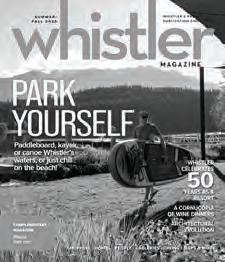


3/4thyearapprenticesand Journeymenelectriciansneeded. Residentialandcommercialprojects inWhistlerandSquamish. Wagesbasedonexperience,Vehicle,travel, medicalbenefits,overtimeprovided Email: admin@baseelectric.ca
ClinicalServicesManager
Salary: $100000 -125000


PositionOverview: PositionOverview:Providesleadershipofa comprehensiverangeofnursingprogramswithincommunityand publichealth,homecareandpatienttravelinthreeFirstNations communitiesofN’Quatqua,Samahquam,andSkatin.
Qualifications:
•Bachelor’sDegreein
Nursingfroma recognized university
•5+yearsnursingexperience including:
•Publichealth(maternal, infant,child,youth,mental wellness,addictions)
•Homecare(elder health,chrinicdisease management,injury prevention)
•1+yearmanagement experience
•CurrentCPR(HCP) certification
•Currentpracticing registrationas aRegistered NursewiththeBC College ofNursesandMidwives (BCCNM)
Seefulljobposting:
sshs.ca/careers/
Applybysending your resumeandcoverletter to: julia.schneider@sshs.ca



Dutiesinclude:
•Developpoliciesandguidelines fortreatmentservices
•Managecommunity,public health,primarycare,andhome care programs
•Ensurenursingcare standards andbestpractices
•Provideleadership,monitoring, andguidancetostaff
•Collaborate withinterdisciplinary teamstoenhancecommunity health
•Supervisenursesand administrative staff
•Managehealthfacilityoperations, includingscheduling,prioritizing, andevaluatingperformance
•Knowledgeof,andabilityto apply, anunderstandingofFirst Nationsculturalprinciplesand protocolsinworksituations.
Special:
•Thispositionisrequirestravelto indigenous communitiesserved by SSHS,accessedbyForest ServiceRoad
•SSHSoffersa competitive benefitsandemployment packagetofulltimeemployees
Headlines & images can be mixed and matched as needed.
NOTE: “Carve out a new career path” should always be paired with a winter image




ApplicantsmustpossessaNursingdiplomaor degree,currentpracticingregistrationwithBCNU, a class5driver’slicenseanda clearcriminal recordcheck,includingvulnerablesector.
Formoredetailsonthejob,orto applyvisit www.lilwat.ca/careers
Foranyquestionsemail: hr@lilwat.ca
Do not move the position or change the typesetting of the headline. The bottom angled keyline should always align with the angled gradient jolt.

COORDINATOR, ASSESSMENTS
If body copy is shorter, copy block can be nudged down to balance out visually in column

FACILITIES ENGINEER
Part Time, Year Round
Full Time, Year Round
Love a good challenge? Passionate about the place you call home? Tourism Whistler is looking for community-loving, mountainappreciating, environment-respecting individuals to join our team.
The Facilities Engineer is responsible for the oversight, maintenance, repairs and efficient operations of all main mechanical, electrical and plumbing systems, and the overall common areas at the Whistler Conference Centre, Whistler Golf Course and Driving Range.
The Coordinator, Assessments plays a key role in maintaining accurate Member records and supporting the fair and transparent administration of assessment fees. This role ensures smooth ownership transitions, clear communication with Members, and reliable support for lawyers and notaries during the conveyancing process. As a front-line contact for Members, the Coordinator delivers exceptional customer service while upholding Tourism Whistler’s bylaws and policies.
What We Offer:
• Part time (20 – 24 hours per week)
flexible schedule
• Whistler based with a hybrid approach that balances in-office and remote work
• A commitment to health and wellness, and a fun and supportive team environment
• Starting wage range: $25 - $26 per hour
This position requires an individual who possesses a 4th Class Power Engineering Certificate (or is currently enrolled), complimented with five years of related experience gained in a commercial building or hotel. Experience and knowledge of direct digital controls, energy management systems and green initiatives is also important. Previous leadership experience, with knowledge of applicable buildings codes and health and safety practices is an asset.
TO VIEW OUR CAREER OPPORTUNITIES, AND TO APPLY, VISIT US ONLINE AT WHISTLER.COM/CAREERS.
TO VIEW OUR CAREER OPPORTUNITIES, AND TO APPLY, VISIT US ONLINE AT: WHISTLER.COM/CAREERS.


ÚlÍusCommunityCentre
•Custodian/EventsHost($17.85-$20.90perhour)
•HumanResourcesGeneralist($57,330.00to$64,610.00peryear)
Child&FamilyServices
•AssistantDirector,Child&FamilyServices($93,475.00to $101,556.00peryear)
• TransitionHouseSupport Worker($20.90to$29.45perhour)
Lil’watHealth&Healing+PqusnalhcwHealthCentre
•HealingProgramManager($57,330.00to$64,610.00peryear)
•ProgramCoordinator($46,683.00to$63,973.00peryear)
•AssistantDirector,Health& Wellness($93,475.20to$101,566.00 peryear)
•CommunityHealthNurse($41.42to52.81perhour)+ $2.15hourlypremium)
•LicensedPracticalNurse(LPN)-ChronicDisease($32.84to $37.81perhour+$2.15hourlypremium)
•Registered/LicensedPracticalNurse-HomeCare ($32.84to $45.03perhour+$2.15hourlypremium)
CommunityProgram
•EarlyChildhoodEducator-Infant Toddler($24.00-$29.45/hr basedonexperience+thispositioniseligibleforwagetopup)
Xet’òlacwCommunitySchool
•EducationAssistant($20.90to$29.45perhour)
•LanguageResource WorkerorLanguage Teacher($46,683to $109,520peryear)
Ts’zilLearningCentre
•IndigenousSupport Worker($38,038to$53,599peryear)
•IndigenousSupport Worker–Academic($38,038to$53,599 peryear)
Pleasevisitourcareerpageformoreinformation:https://lilwat.ca/careers/
Full Time, Year Round
Full Time, Year Round
Love agoodchallenge?Passionateabout theplaceyoucallhome?TourismWhistler islookingforcommunity-loving, mountain-appreciating,environmentrespectingindividualstojoinourteam.
TheFacilitiesEngineeris responsible fortheoversight,maintenance,repairs and efficientoperations of allmain mechanical,electricalandplumbing systems,andtheoverallcommonareas at theWhistlerConferenceCentre, WhistlerGolfCourseand DrivingRange.
TheSpecialist,Communicationsplays a pivotal rolein executingall of Tourism Whistler’s corporatecommunications functions,includingmember communications,news media relations, issuesmanagement,andgeneratingeditorial exposureforboththedestinationand organization.
HealthProgram
ClinicalServicesManager
Providesleadership of acomprehensive range ofnursing programswithin community andpublic health
CommunityHealthNurse
Providecaretoadultmembers(19+),being responsibleoffullscopenursing care to avariety ofclients, constantlypromotinghealthand wellnesseducation,andaligning careoutof community
Home &Community Care Nurse
Providecaretoadult communitymembers(19+), being responsibleforfullscopenursing care to homecareclientsandmemberswithchronic diseases,constantlypromotinghealthand wellness education,andaligning careoutof community
Child &FamilyServices
FamilyPreservationWorker
SupportsSSHSfamiliesthroughculturally sensitiveprogramsandservices,promoting children’ssafetyand qualityoflife. This role coordinatesresourcestoenhancefamilyunity, empowering familiesasprimarycaregivers
Jordans Principle
JordansPrincipleAdministrativeAssistant
Providesadministrativesupport to theJordan’s PrincipleServiceCoordinator, Service Coordination delivery,andsupportcommunity building activities asneeded.Disseminate informationtothepublicand to serviceproviders and community-basedprofessionalstopromote Jordan’sPrinciple and reduceservicebarriers for IndigenouschildreninBC.
Early ChildhoodDevelopment
ECDProgram Coordinator
TheECD Coordinatoroverseesquality programming in N’Quatqua,Skatin,and Samahquam, includingEarlyChildhood DevelopmentDrop-ins, Playgroups,andlicensed childcare. They supportchildrenaged0-6and theirfamiliesusingastrengths-basedapproach, managing programplanning,staffing,resources, recordkeeping,andreporting.
Administration
Bookkeeper


SSHSis anon-profitIndigenous HealthOrganizationdedicated to improvingthehealthand wellbeingofIndigenous communities.Ourorganization providesculturallyappropriate healthcare services,programs andinitiatives to supportthe holistichealthofIndigenous individualsand families.
SSHSoffersa competitive benefitsandemployment packageforfull-time staff Allpositions requireon-site availability
SSHS teammemberstravel fromourofficeinMountCurrie, BCinto thecommunities,often drivingalong aForestService Road foruptotwo hoursor beinghelicopteredin. This ensuresthatSSHSmembersfromnewborns to Eldershave access to thehealthand wellnesssupports at theirhealth stations,orhealthspace,intheir home communities.


TheBookkeeperwillplayacrucial role in managing thefinancial recordsandtransactions forSSHS,ensuring precision,compliance, and overallfinancial stability. This detail-oriented individualwill be motivated to assist our accounting team in maintaining accuratefinancial recordsandhandling daily bookkeeping tasks.

This role requires acandidatewhois well-organizedwith excellentwrittenand verbalcommunicationskills,knowledge of Whistler,andprevious experienceina related role.
WhatWeOffer:
•A nine-dayfortnight schedule
Thisposition requiresanindividual whopossesses a4thClass Power EngineeringCertificate (oriscurrently enrolled),complimentedwithfive yearsofrelated experiencegained in acommercialbuildingorhotel. Experienceandknowledge of direct digitalcontrols,energymanagement systemsandgreeninitiativesis alsoimportant.Previousleadership experience,withknowledge of applicablebuildingscodesandhealth andsafetypracticesisanasset.
•Whistlerbasedwith ahybridapproach that balancesin-officeand remote work
•A commitmenttohealthand wellness, anda funandsupportiveteam environment
•Startingsalary range: $55,000 -$59,000annually TO VIEWOURCAREEROPPORTUNITIES, APPLY, VISITUSONLINE AT: WHISTLER.COM/CAREERS.
TO VIEWOURCAREEROPPORTUNITIES, AND TO APPLY, VISITUSONLINE AT WHISTLER.COM/CAREERS

Applybysendingyourresume andcoverletterviaemail: Julia.schneider@sshs.ca
View thefulljobpostingson ourwebsite: sshs.ca/careers/

Applicantsshouldbeprofessionalandsafety-minded, with a commitmenttocontributing positiv elytoou r teamenvironment.
We areseekingaqualifiedindividualforthefollowing position: HeavyDutyRedSeal TechnicianorApprentice Heavy Duty TechnicianorShopHelper
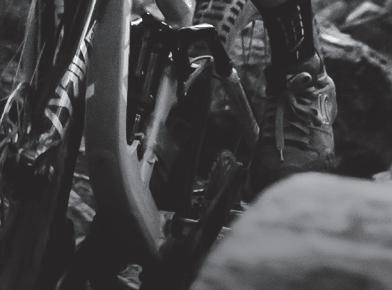
*Competitivewages,extendedhealthbenefits(after3 months)
PleaseEmailresumeto: info@whistlerexcavations.com












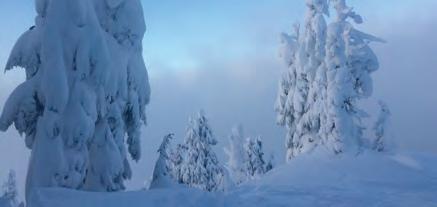




THE NEWS IS GETTING progressively more alarming. Watching a country once hailed as the leader of the free world gleefully tear up its constitution, embrace corruption, piss of its allies, trample human rights, and methodically tick off every box of the fascist playbook is surreal.
Things have gone well beyond right-left politics into some dangerous territory.

BY ANDREW MITCHELL
But as bleak as things are, there was still hope that things would one day go back to normal. As long as comedians like John Stewart, John Oliver, Jimmy Kimmel, Jimmy Fallon and others were still on air and poking fun of those in power, free speech still existed. As well as providing some much-needed levity in a dark time, their very presence was comforting.
That’s because free speech doesn’t exist in undemocratic and authoritarian states. It’s usually the first thing to go. But as long free speech still exists then America remains America, even if it’s having a less than “shining city on a hill” moment. It means it’s still a democracy.
Silencing critics and muzzling the media by any means is what every single authoritarian does. Their whole schtick is righteous anger and strong feelings over
facts. They need to be seen by the people as infallible and all powerful - the only person you can trust to save the homeland from its enemies.
They can’t be questioned. They can’t be criticized. And they sure as hell can’t be laughed at. As you can probably guess, there weren’t a lot of liberal talk shows in Nazi Germany.
Have a look at the photos and videos of Hitler with his weird little moustache, or Mussolini disdainfully glowering at every camera like someone just insulted his mother, or Kimi Jong Un rocking a frown and a flat top. Dictators come off as joyless people, utterly incapable of laughing at themselves. If they ever smiled or laughed then it was at someone else’s expense, or because something violent or cruel just happened.
Donald Trump himself isn’t a particularly
In fact, in some corners of the Internet, some will even blame Obama for Trump running for president in the first place after making some jokes at his expense at a White House Correspondents Dinner – a once annual event where politicians and the press would roast each other and laugh at themselves and generally show the world they’re fully realized human beings. Trump doesn’t even attend these events anymore, even though Biden, Obama, Clinton and others made a point of going every single year.
While there’s some debate over how much Trump and the White House contributed to the decision to end Colbert’s contract in May 2026 (the network denies it) most people see it as the network knuckling under to Trump’s influence, killing the show to suck up to the Sourpuss-in-Chief and to get his approval for
In the last election people made a grave error by focusing on the way that Kamala Harris laughs rather than the fact that Trump almost never laughs at all.
happy or joyful man even if he can be affable at times. Photos of him laughing or smiling in a genuine way are rare. In the last election people made a grave error by focusing on the way that Kamala Harris laughs rather than the fact that Trump almost never laughs at all. And he definitely doesn’t like being made fun of by late night TV show hosts or Saturday Night Live or former President Barack Obama, or anyone else, even if it’s always been part of the job.
another big money corporate merger nobody needs or wants.
The situation was similar with the decision to suspend Jimmy Kimmel’s show. It was clear that his mild comments related to Charlie Kirk’s murder were only the pretense – the real goal was to placate Trump and get approval for yet another network merger. In a partial victory, his show was reinstated after Disney started to hemorrhage money due to service cancellations. There was an
immediate $3 billion dollar hit to Big Mouse’s shares.
Some see the reprieve as temporary as Trump isn’t known for taking losses gracefully and believe that the next show hosts on the chopping block will include John Stewart, Seth Meyers, John Olliver and Jimmy Fallon. A lot of people are also wondering if NBC will exert pressure on Saturday Night Live to avoid the Trump’s wrath.
We can imagine that all the comedians that are being cancelled today will live on through the Internet and podcasts, but it’s hard to know what to think at a time when all the tech giants with biggest online platforms for distributing content are also sucking up to Trump for favours and to avoid his wrath.
It’s also worth pointing out that Trump’s comments about the ratings of these shows don’t really apply anymore. Sure, only onepoint-something million people that haven’t cancelled cable will still be up to tune into Jimmy Kimmel Live on a weekend at 11:35 p.m. (Colbert wins that slot with 2.5 million viewers), but it doesn’t matter because millions more will watch him on YouTube the next day. Kimmel has 21.3 million subscribers on YouTube alone. The only question that matters in a free society is whether these shows make any money – and they definitely do.
In Canada, we’re fortunate that comedy and satire – providing it’s not hate speech – is alive and well. This Hour Has 22 Minutes has consistently been funny for 32 seasons. But even it’s under threat: conservative leader Pierre Poilievre has been promising to defund the CBC for years now.
I always assumed that was because he didn’t want a counter narrative to all the private, conservative-supporting media organizations that pretty much own our news these days. But maybe the real reason is that he just can’t take a joke. n



